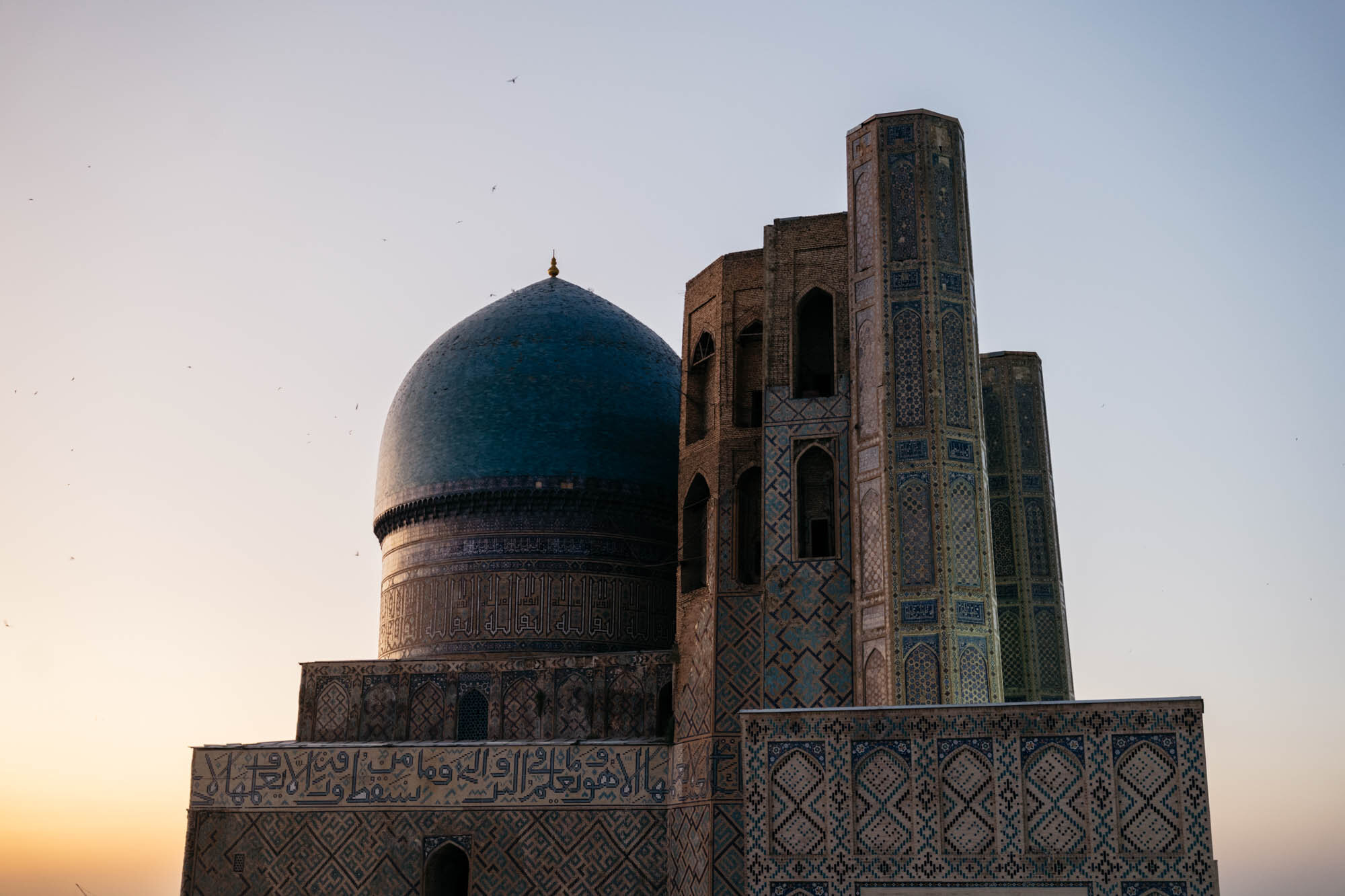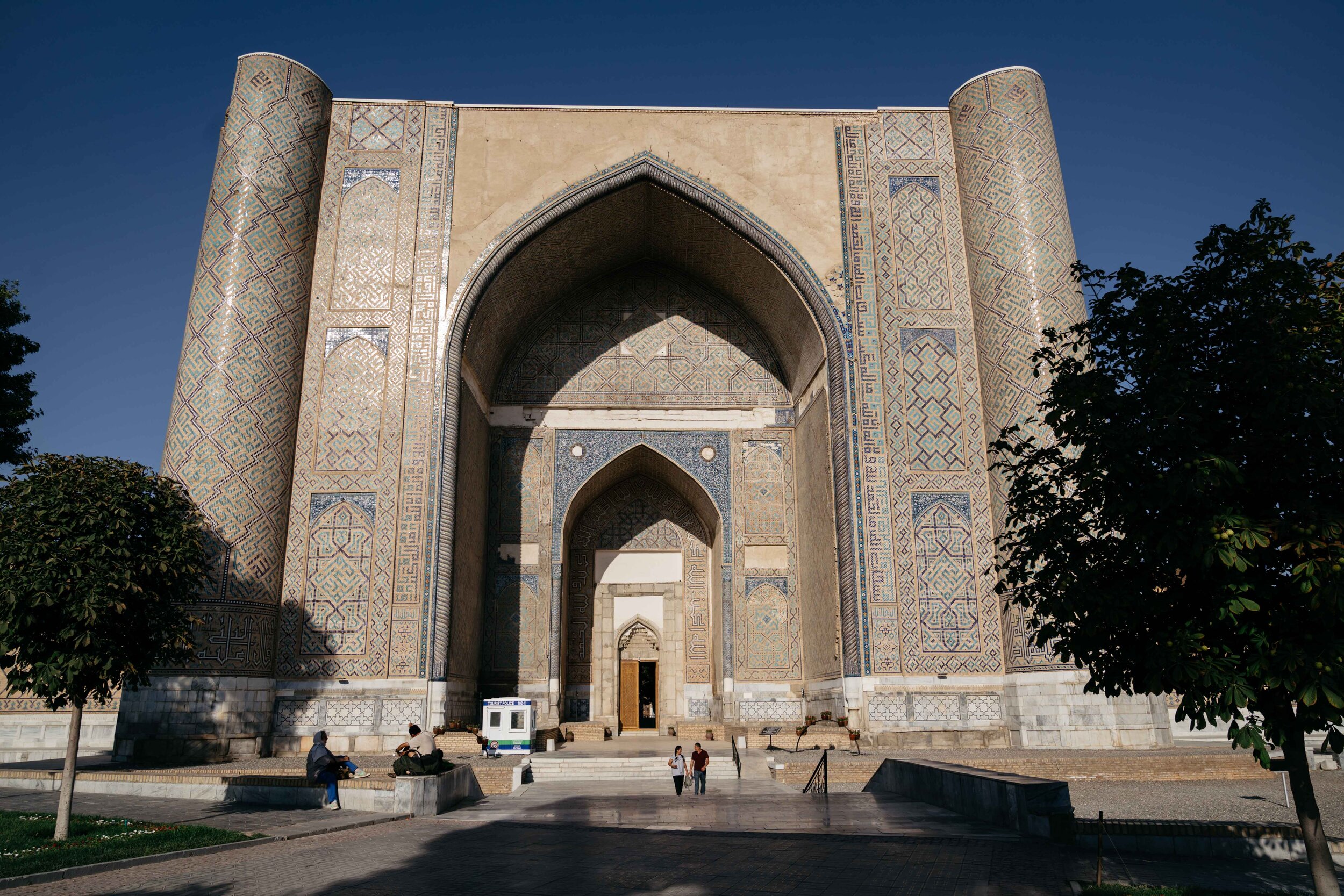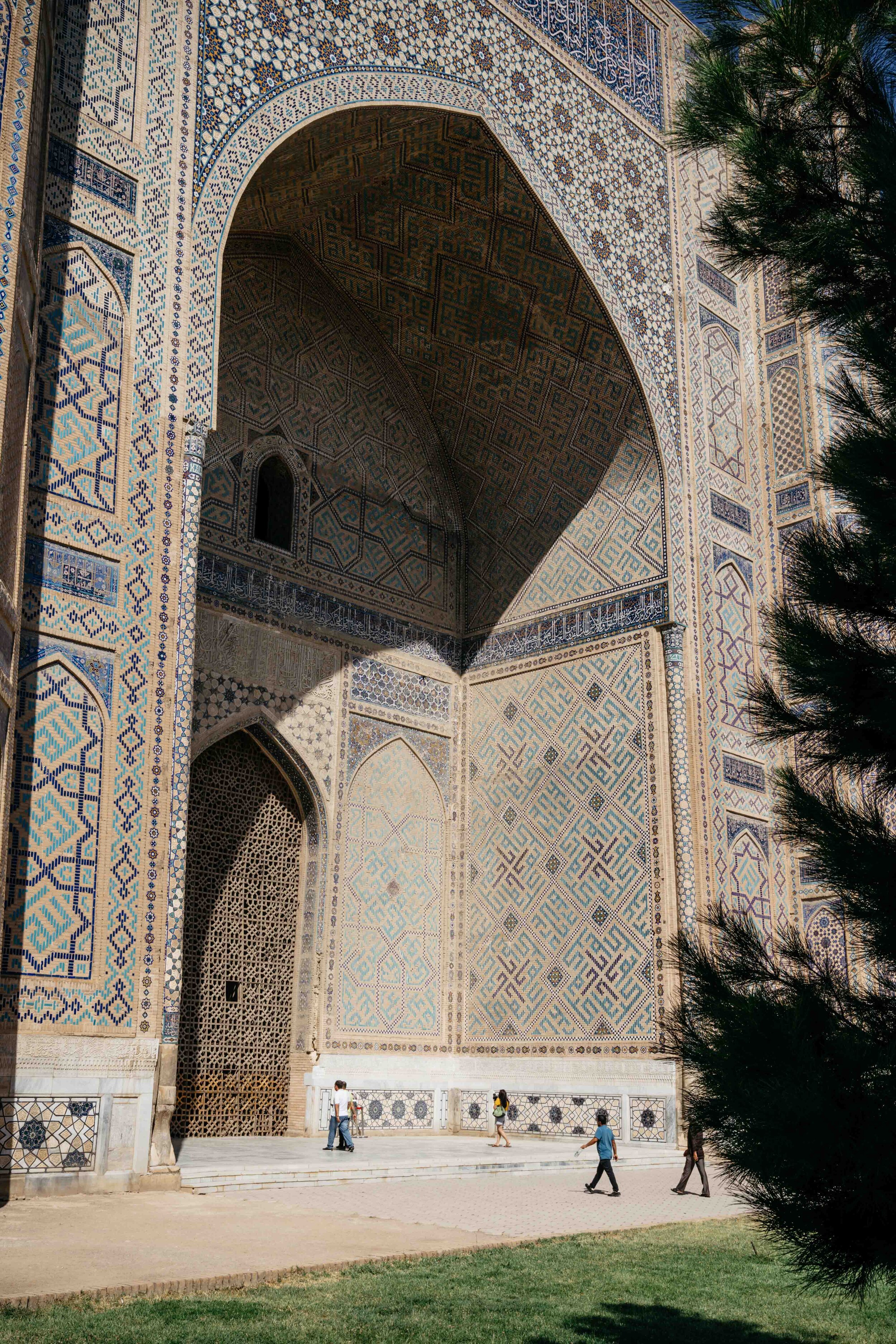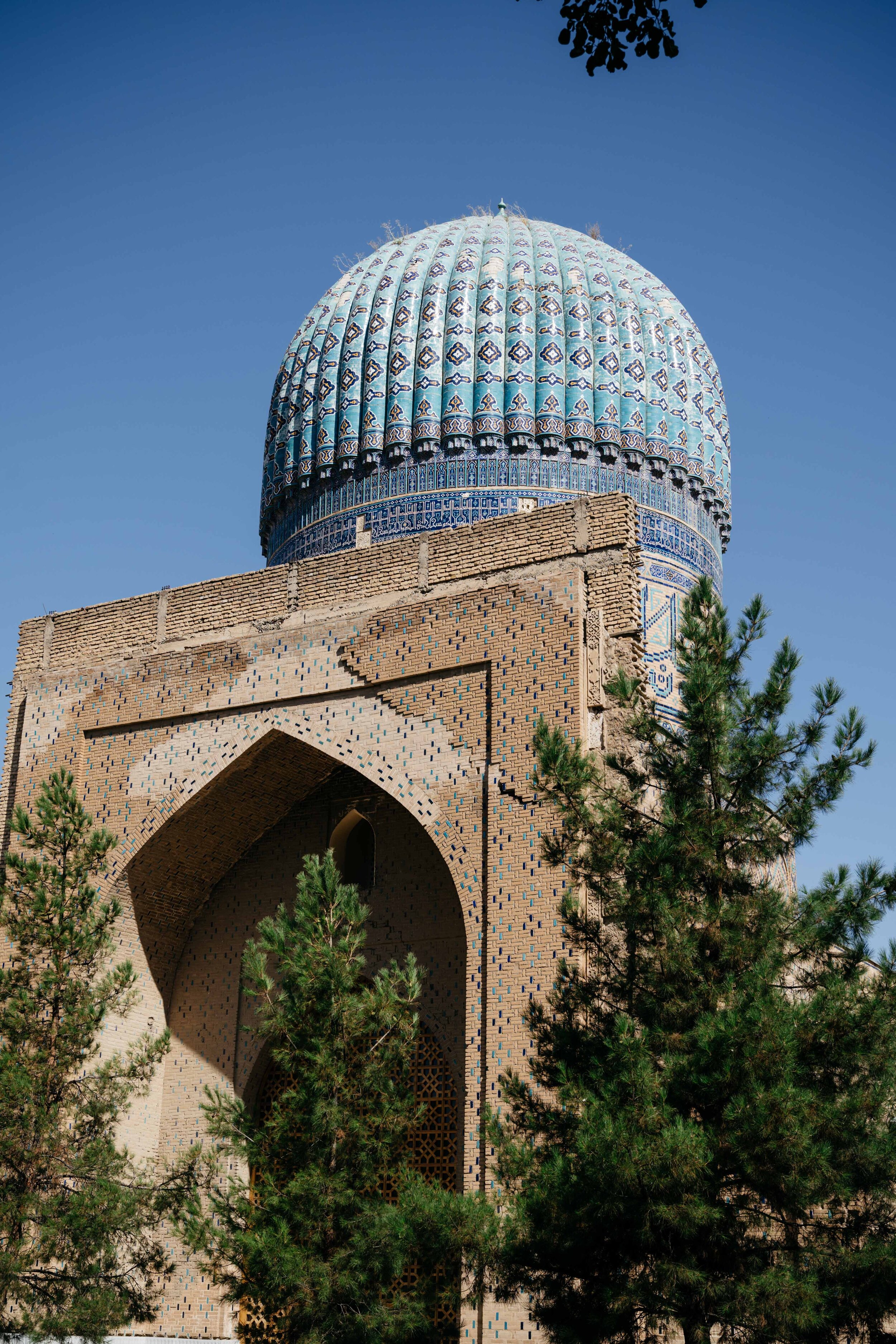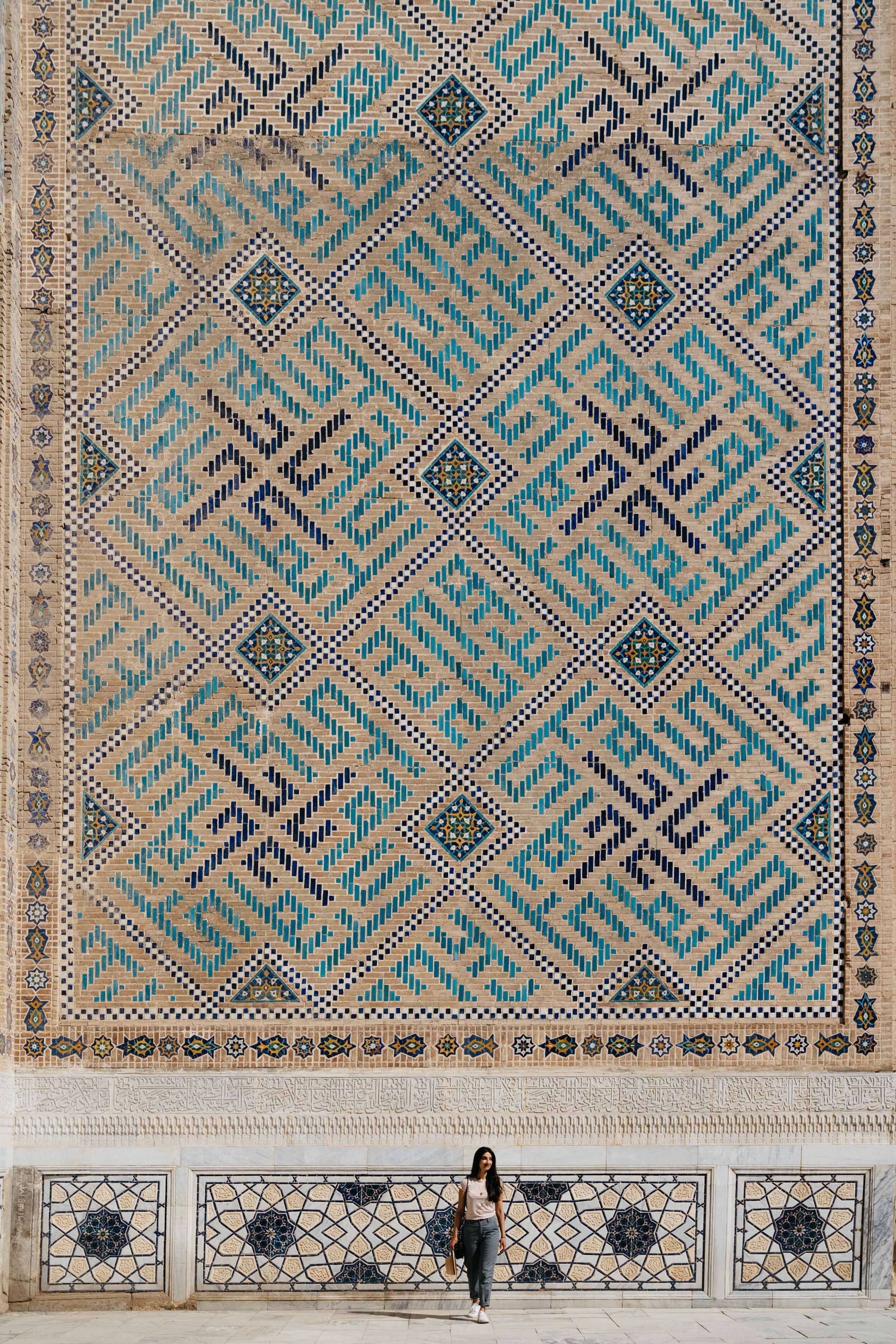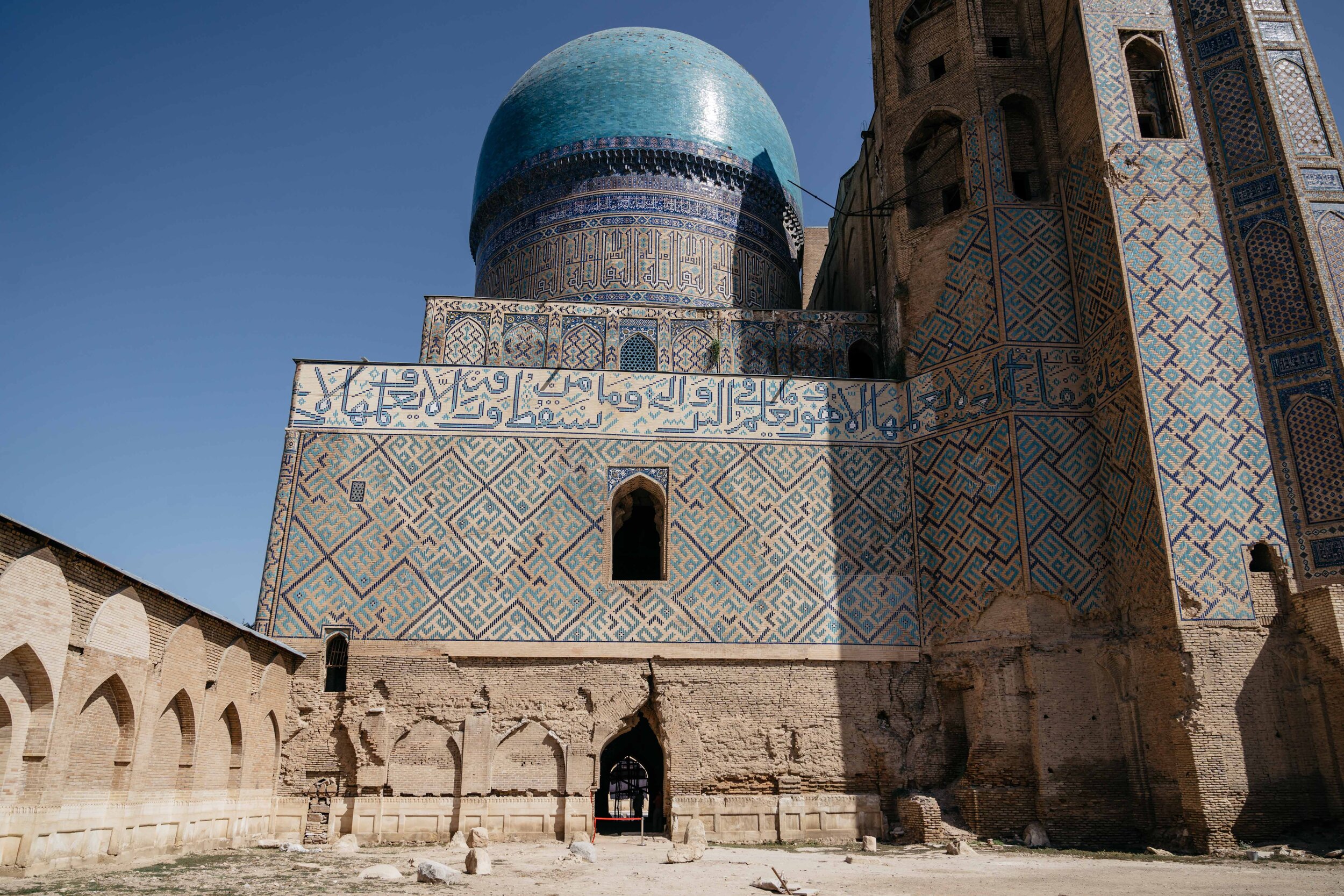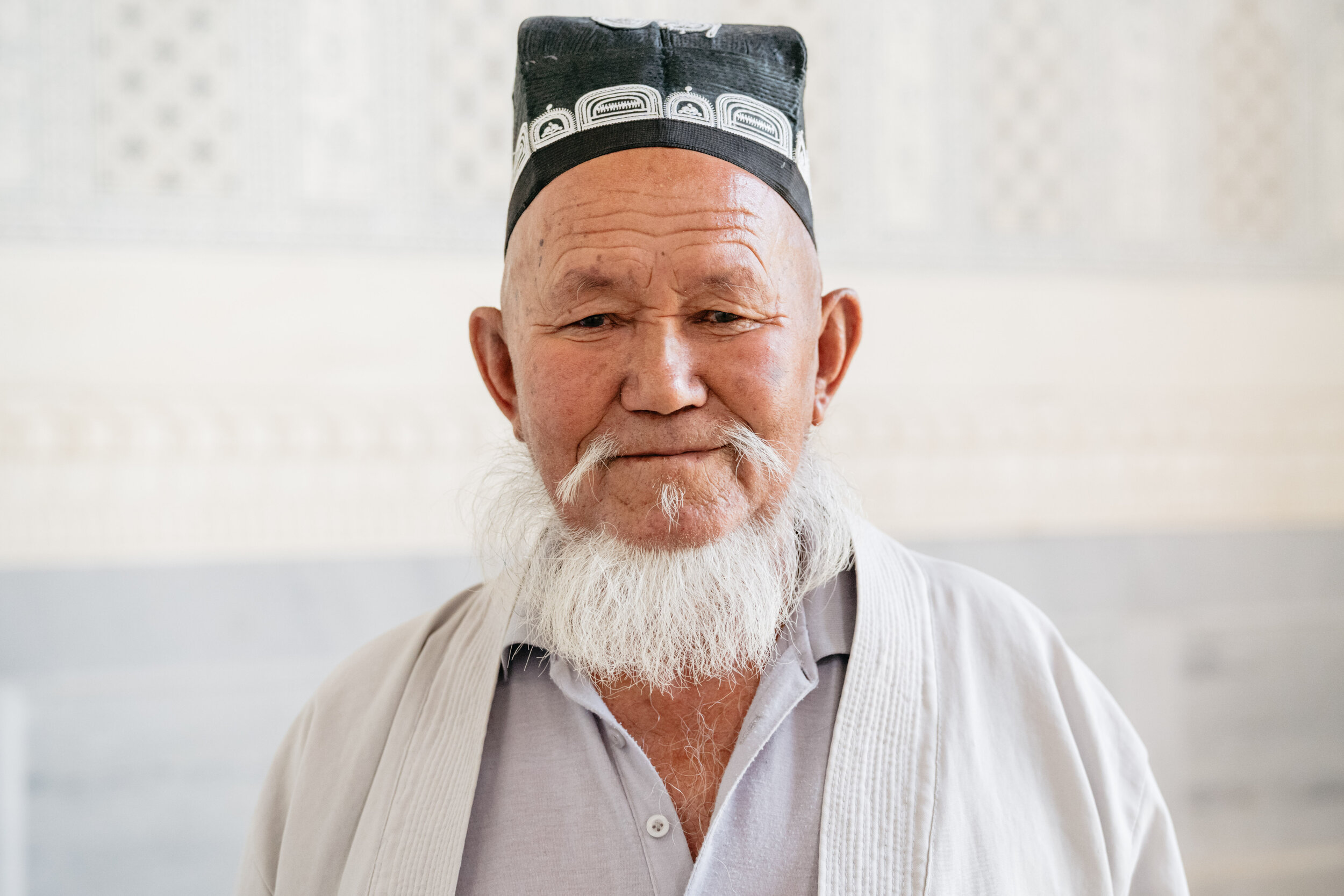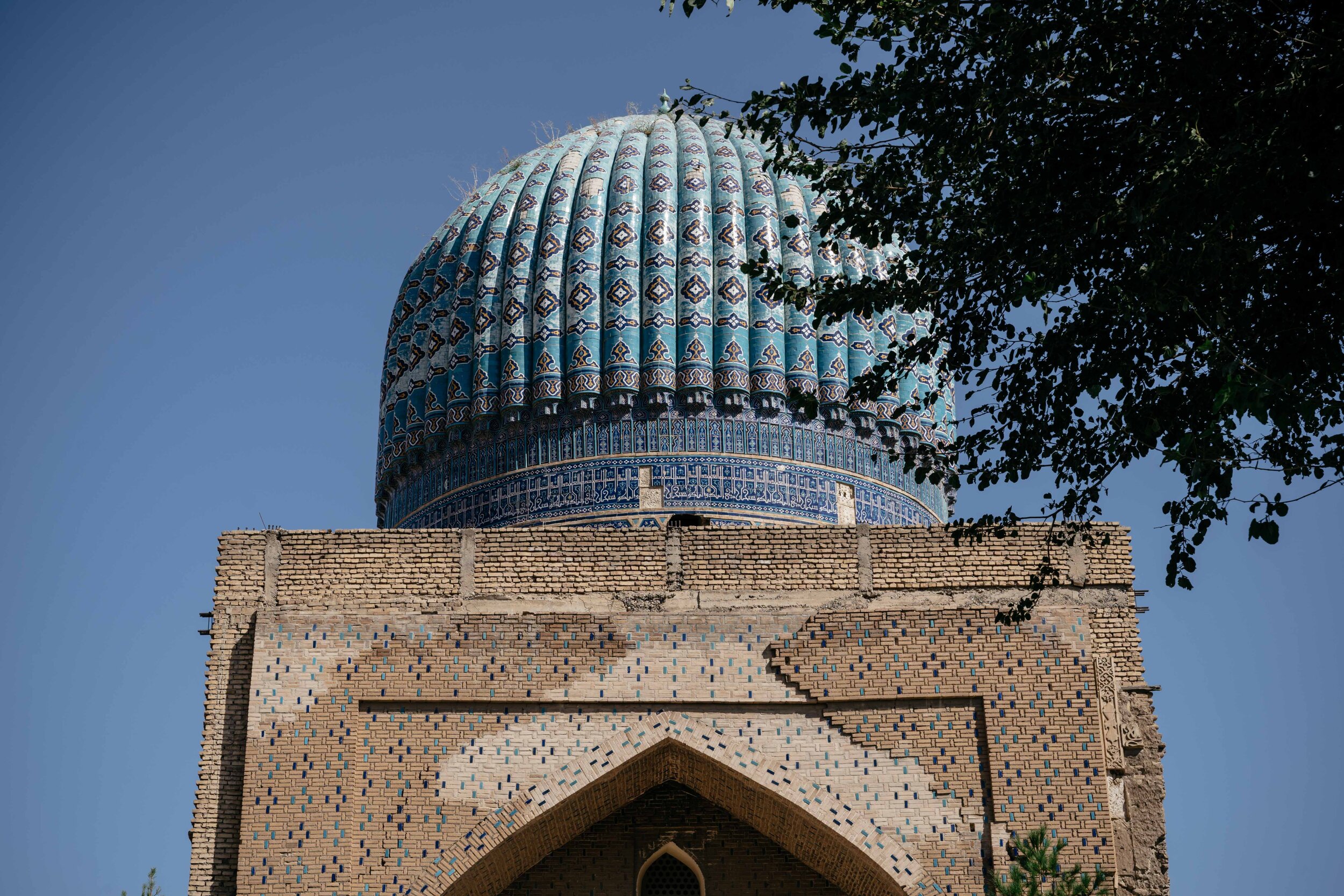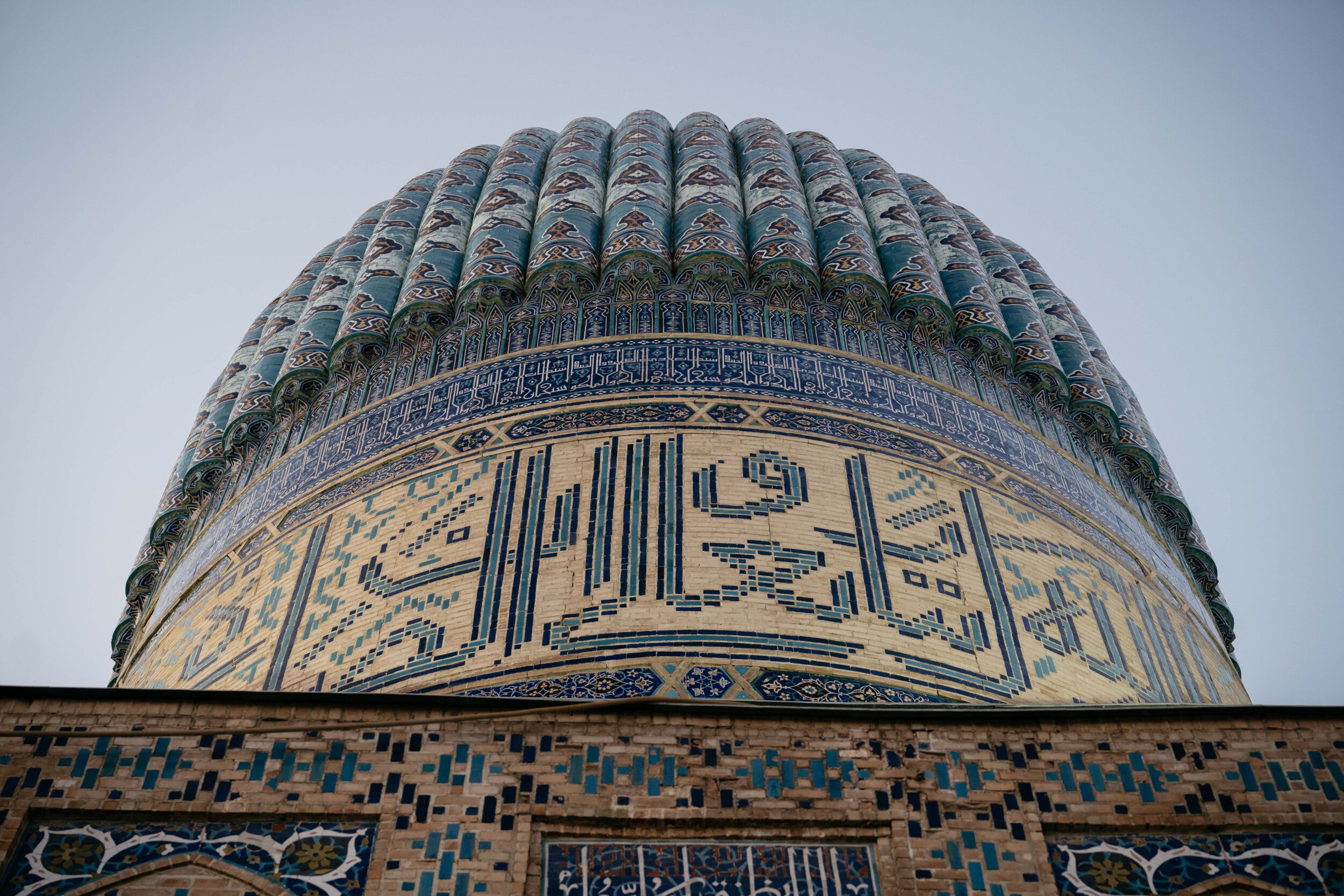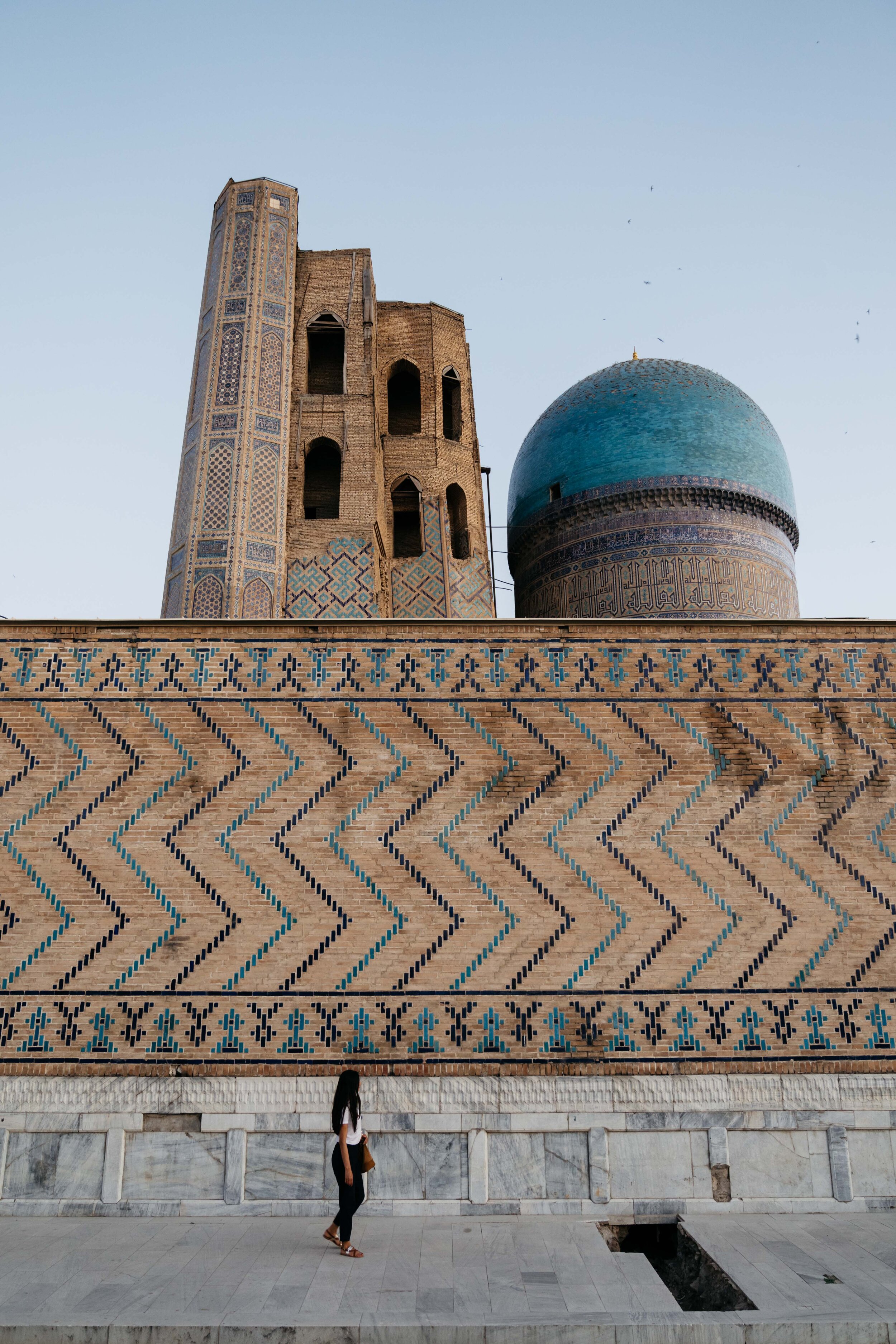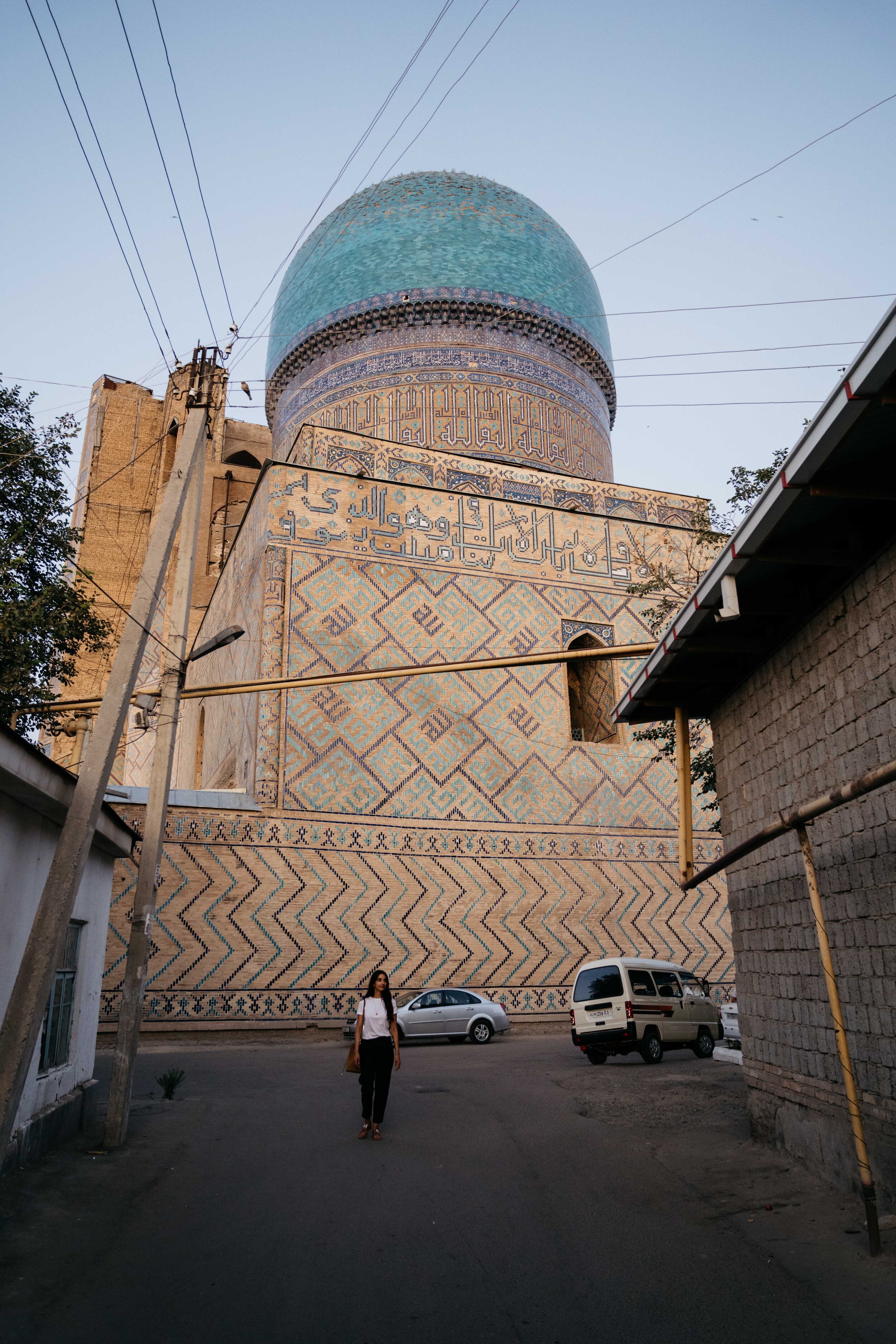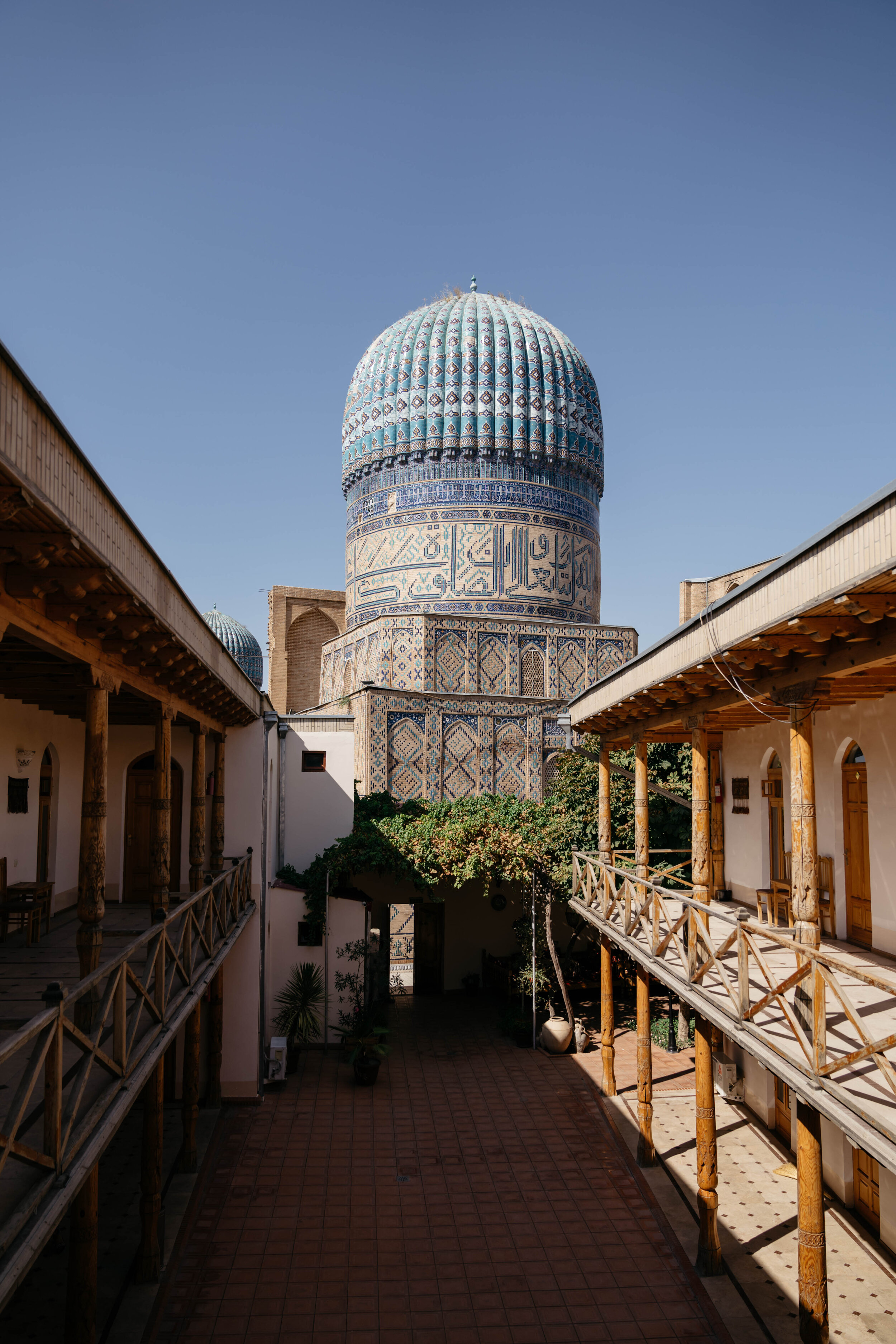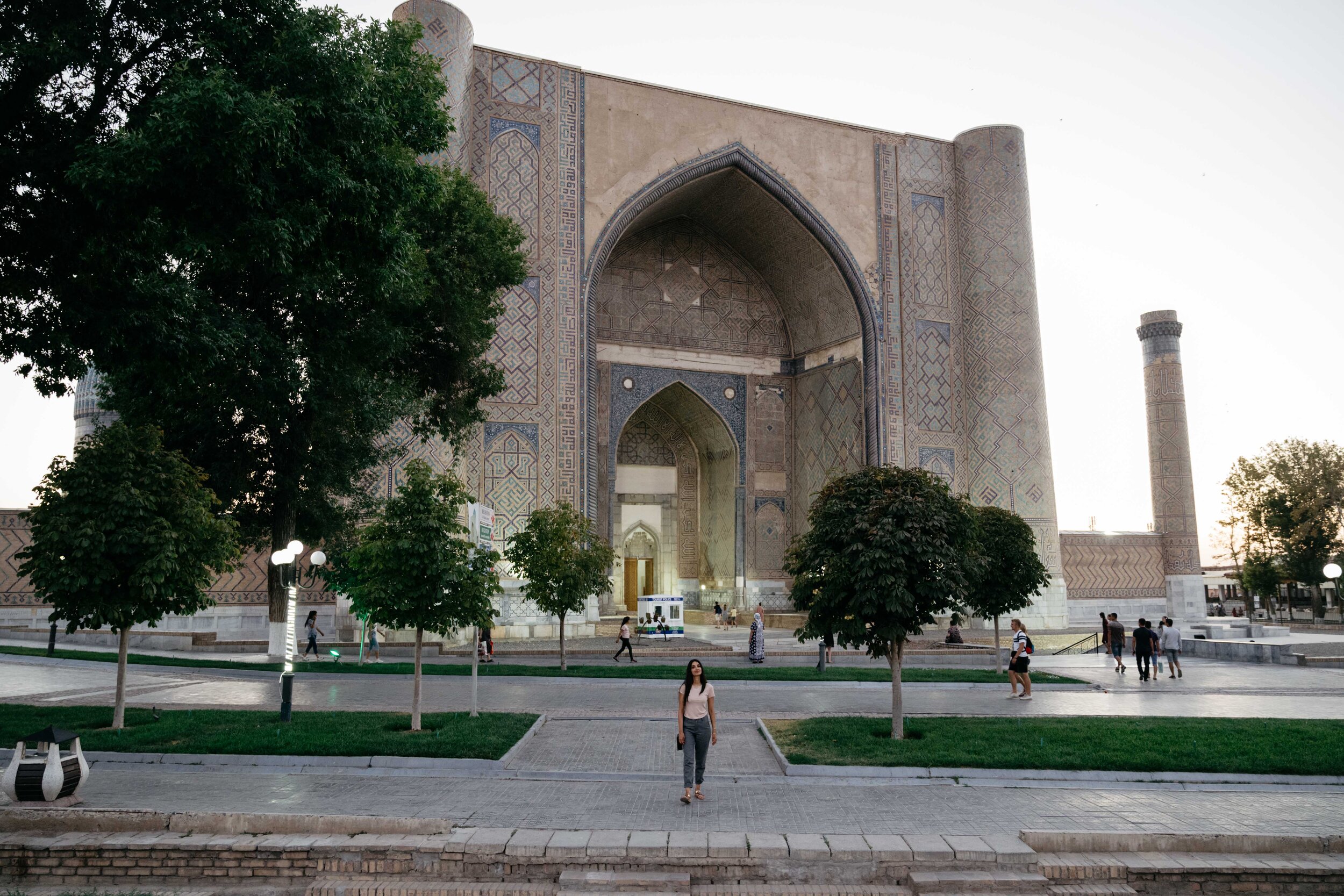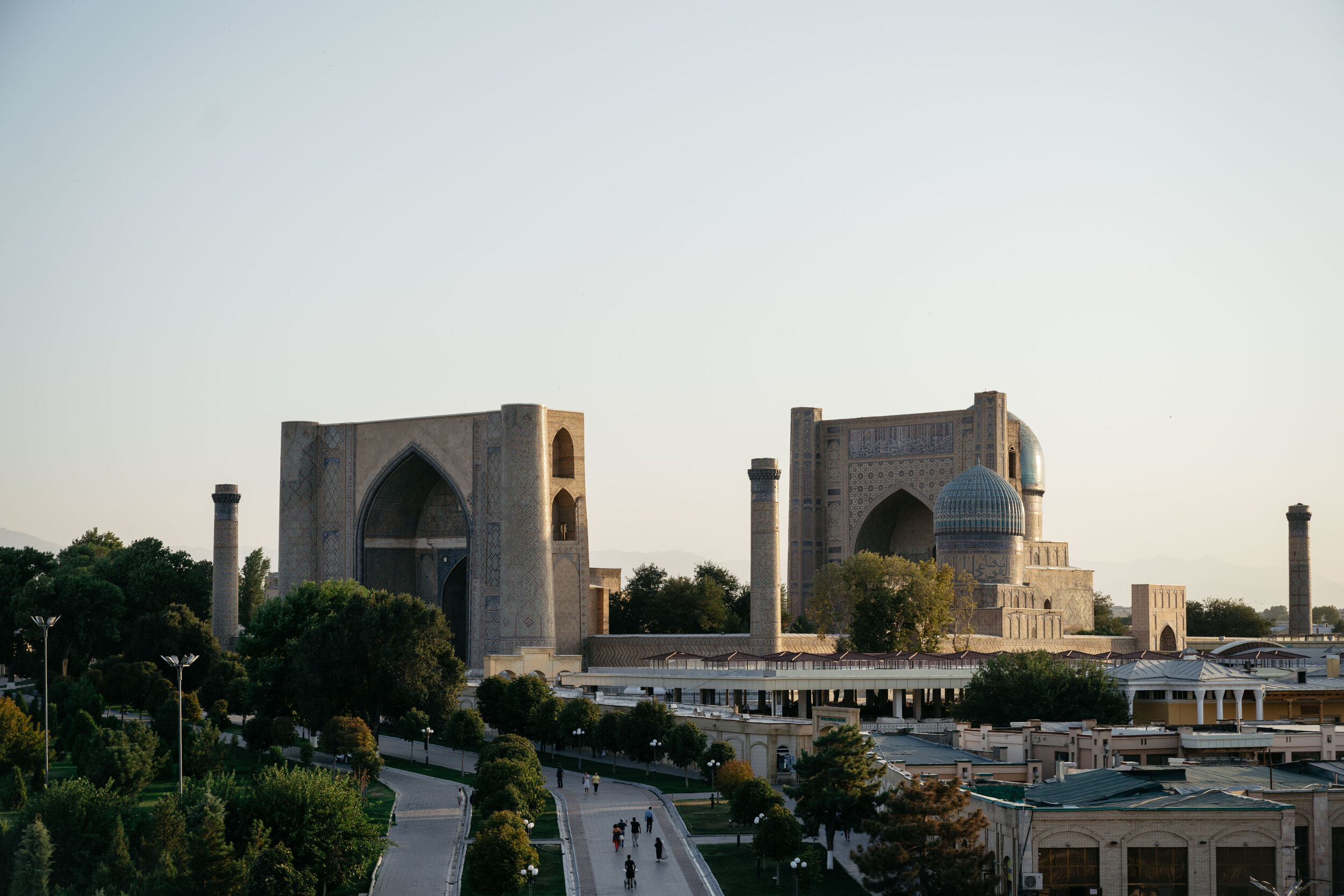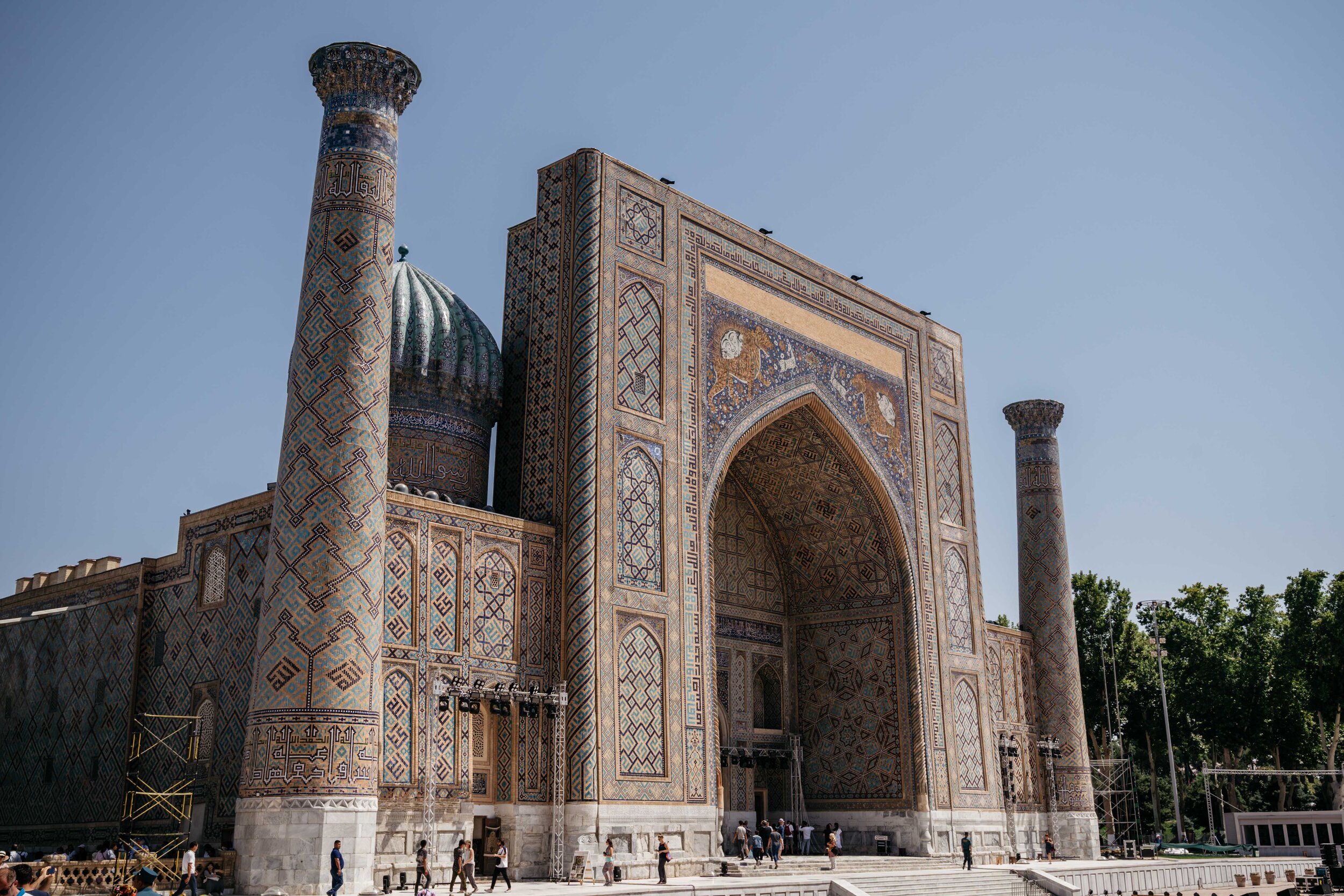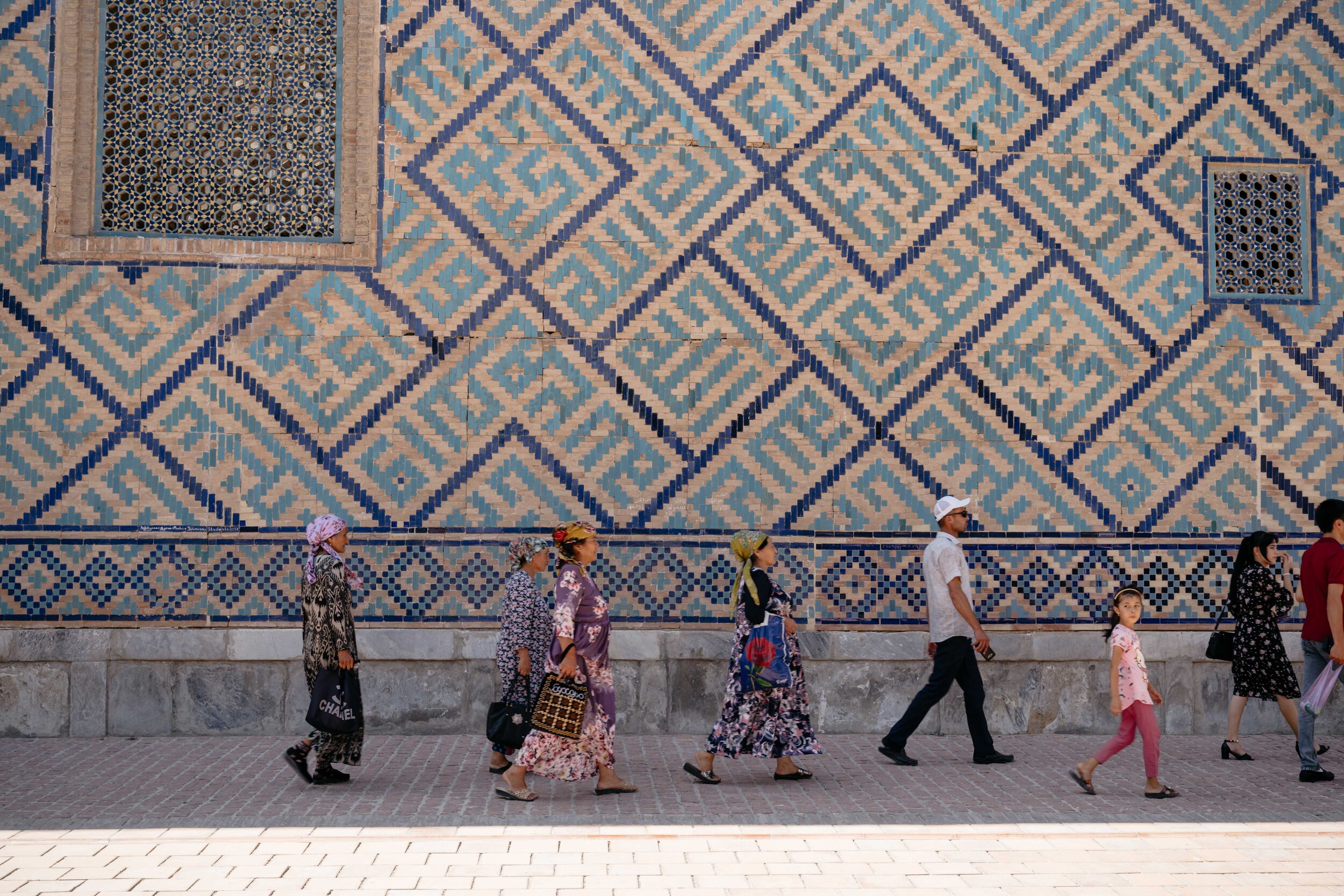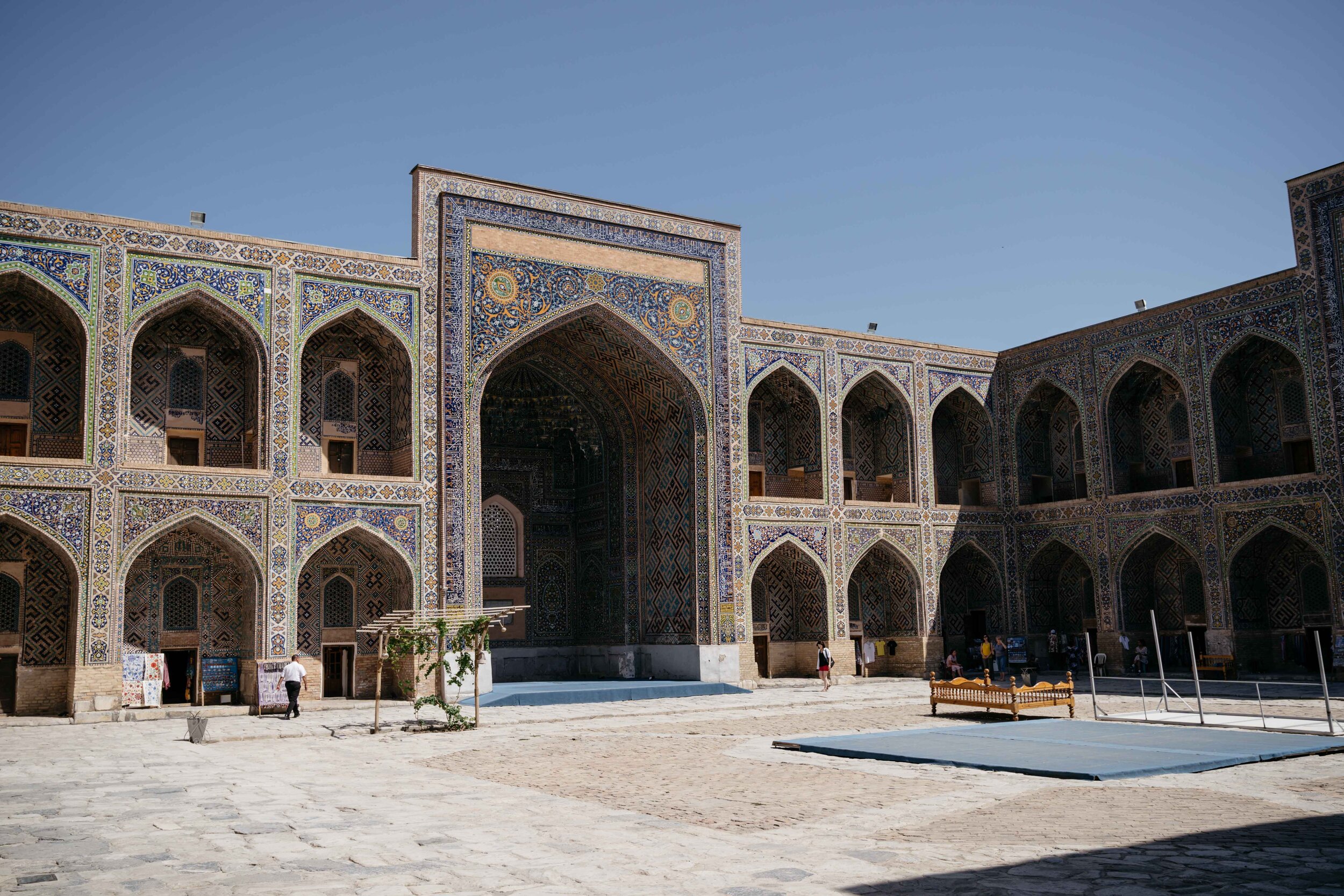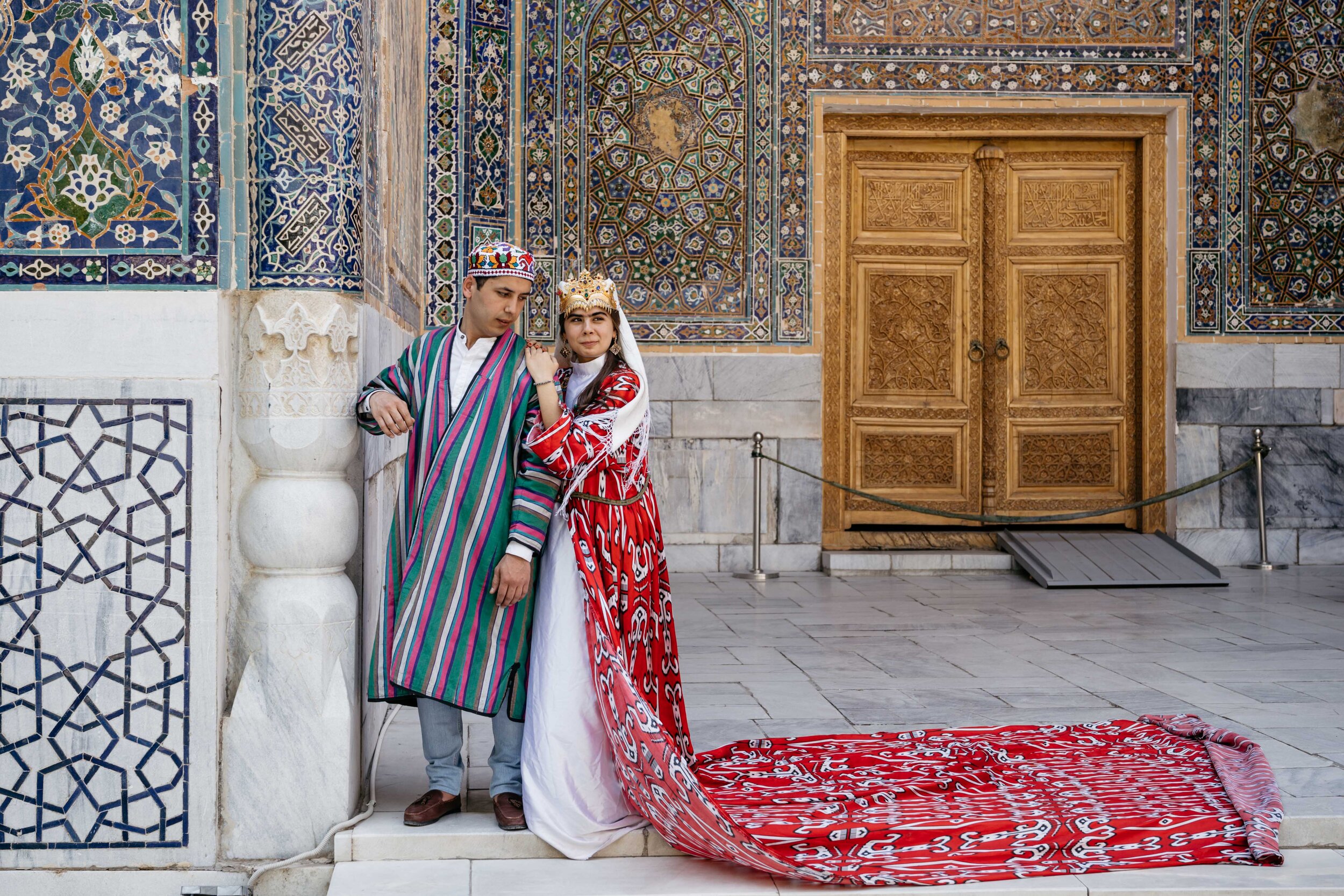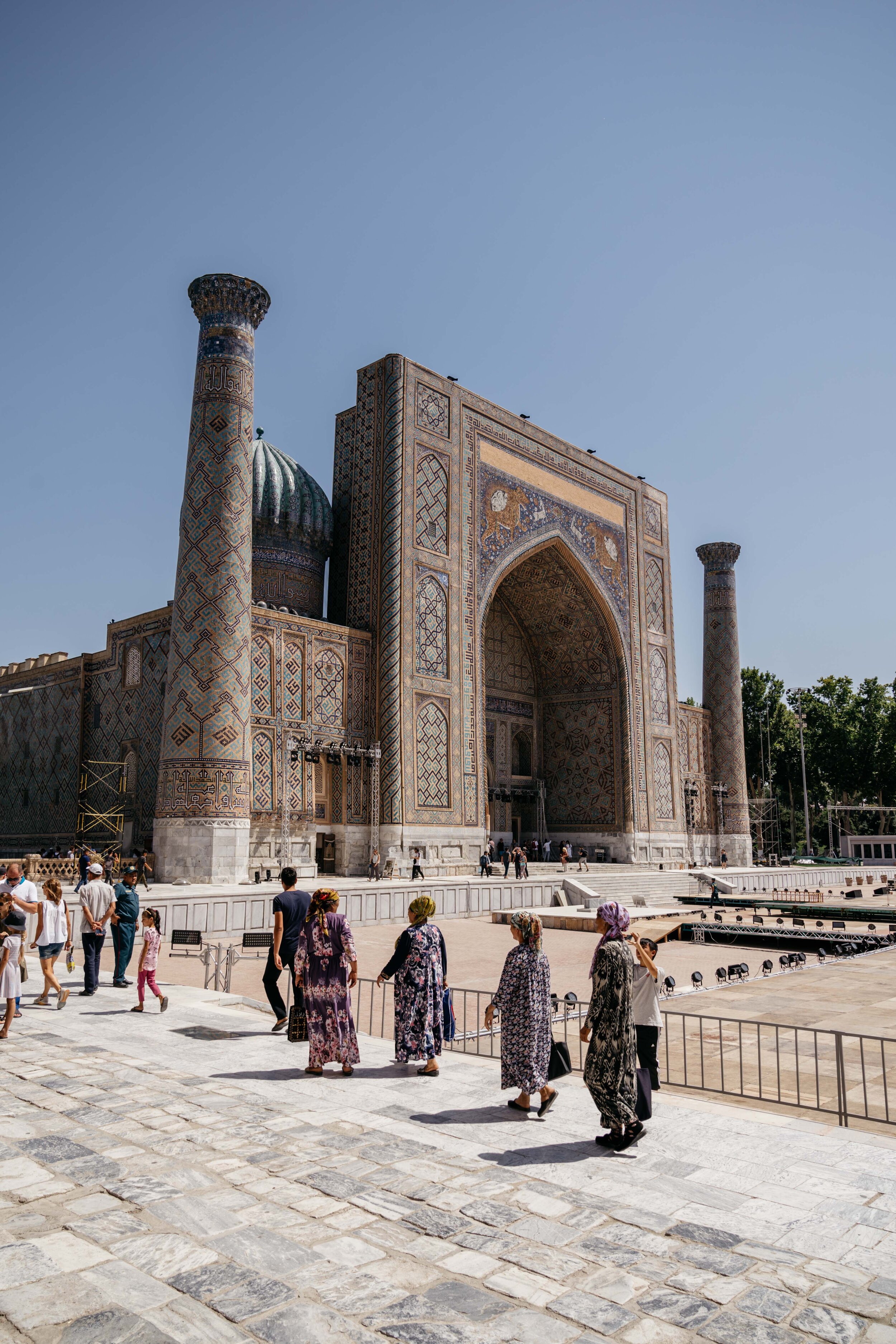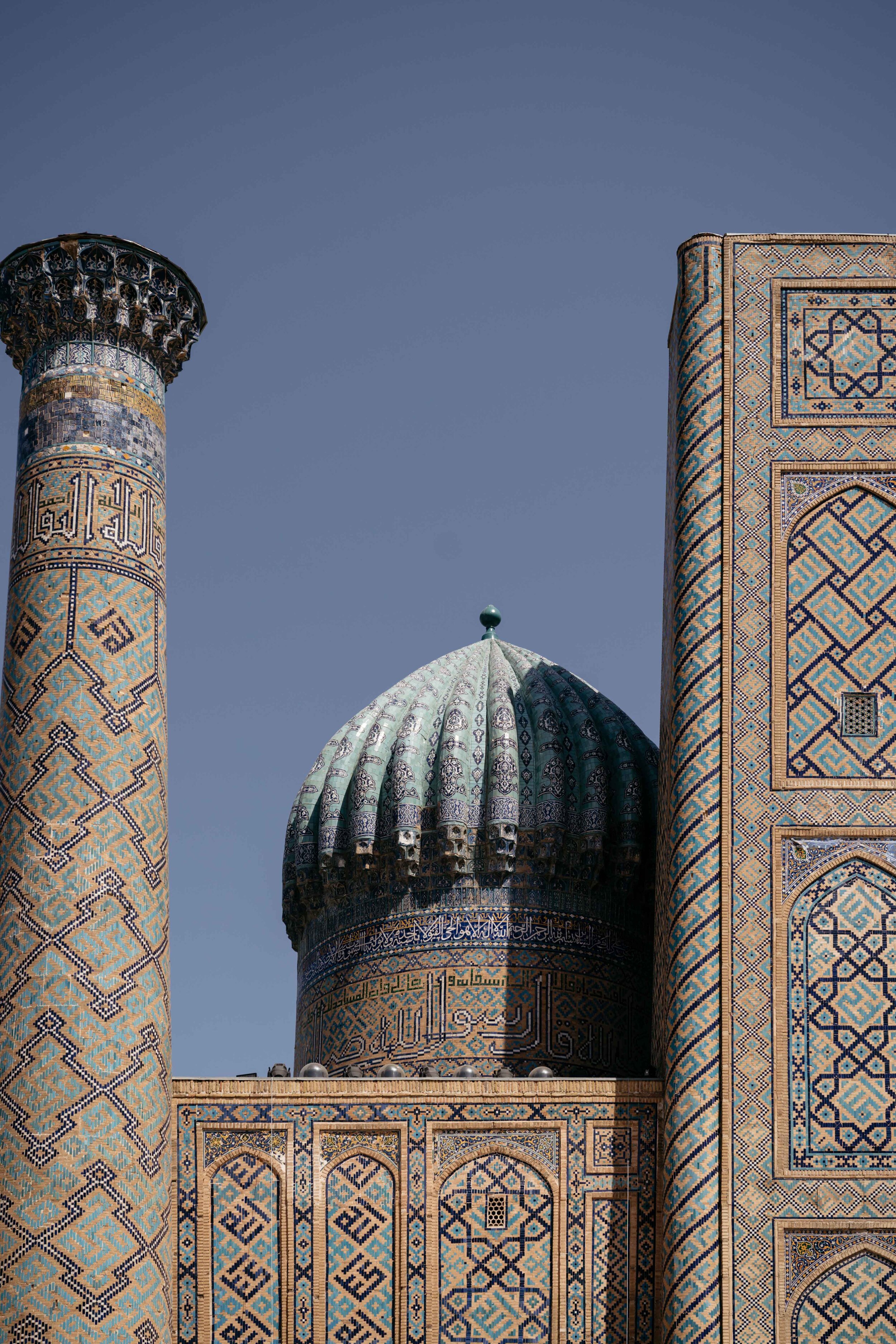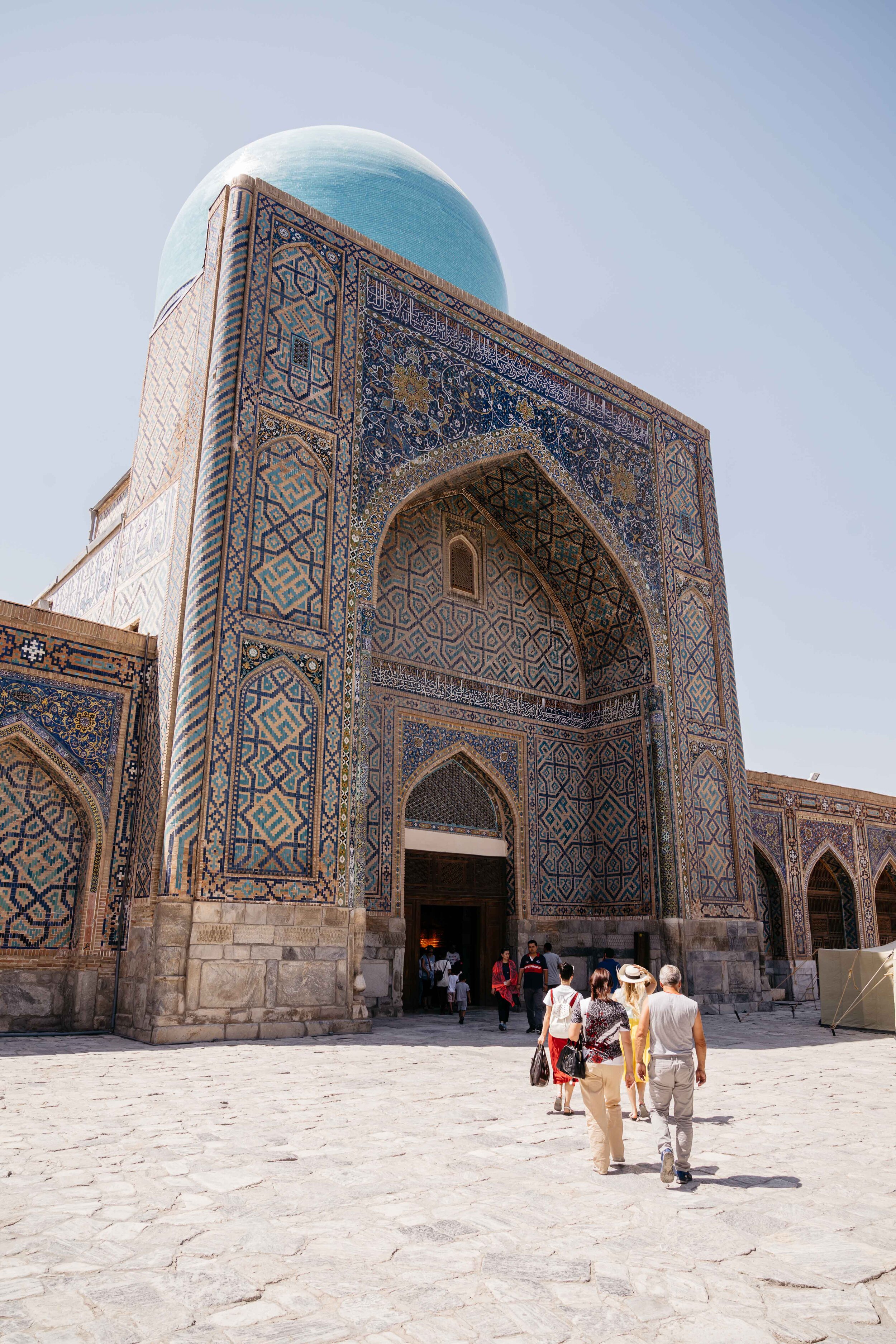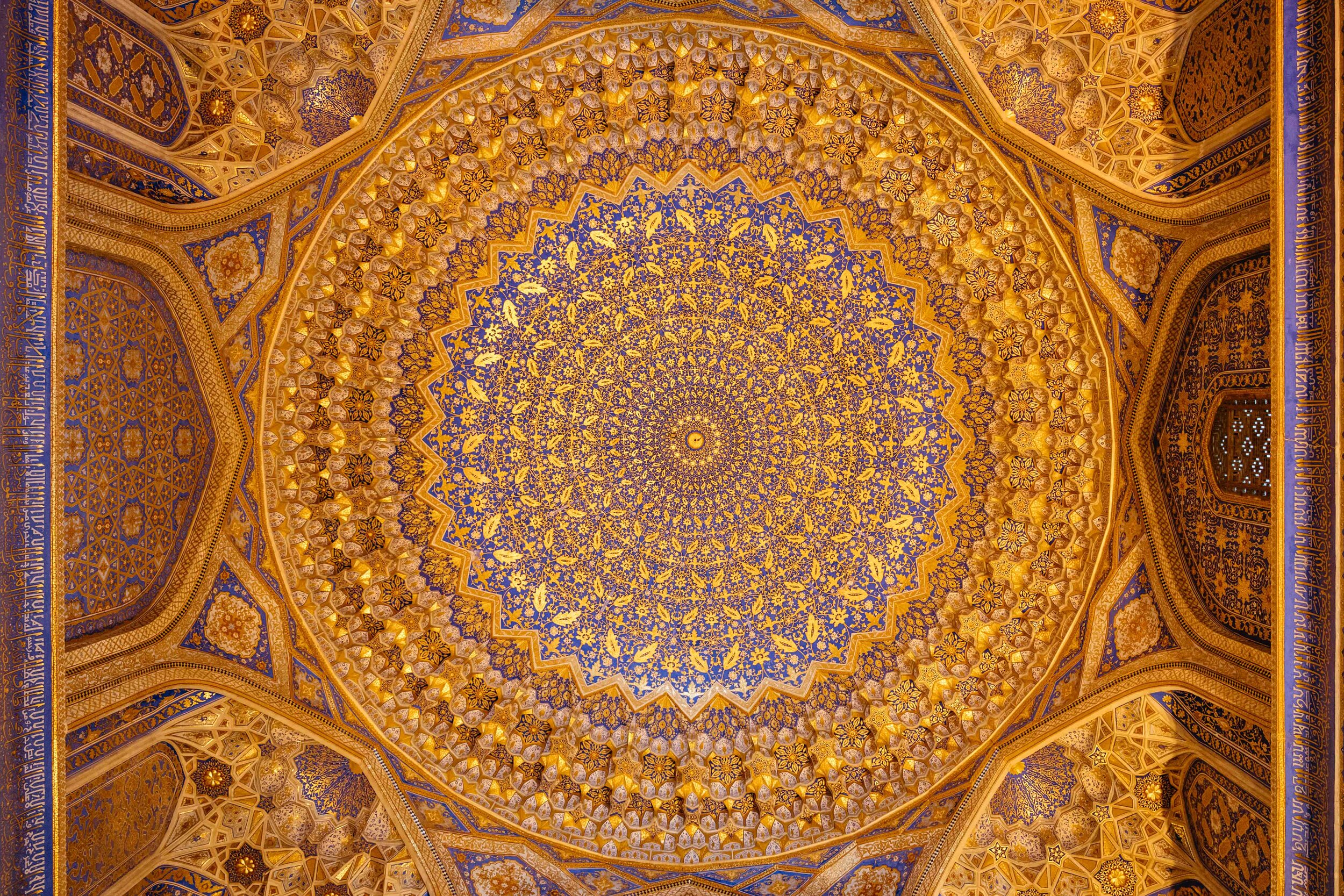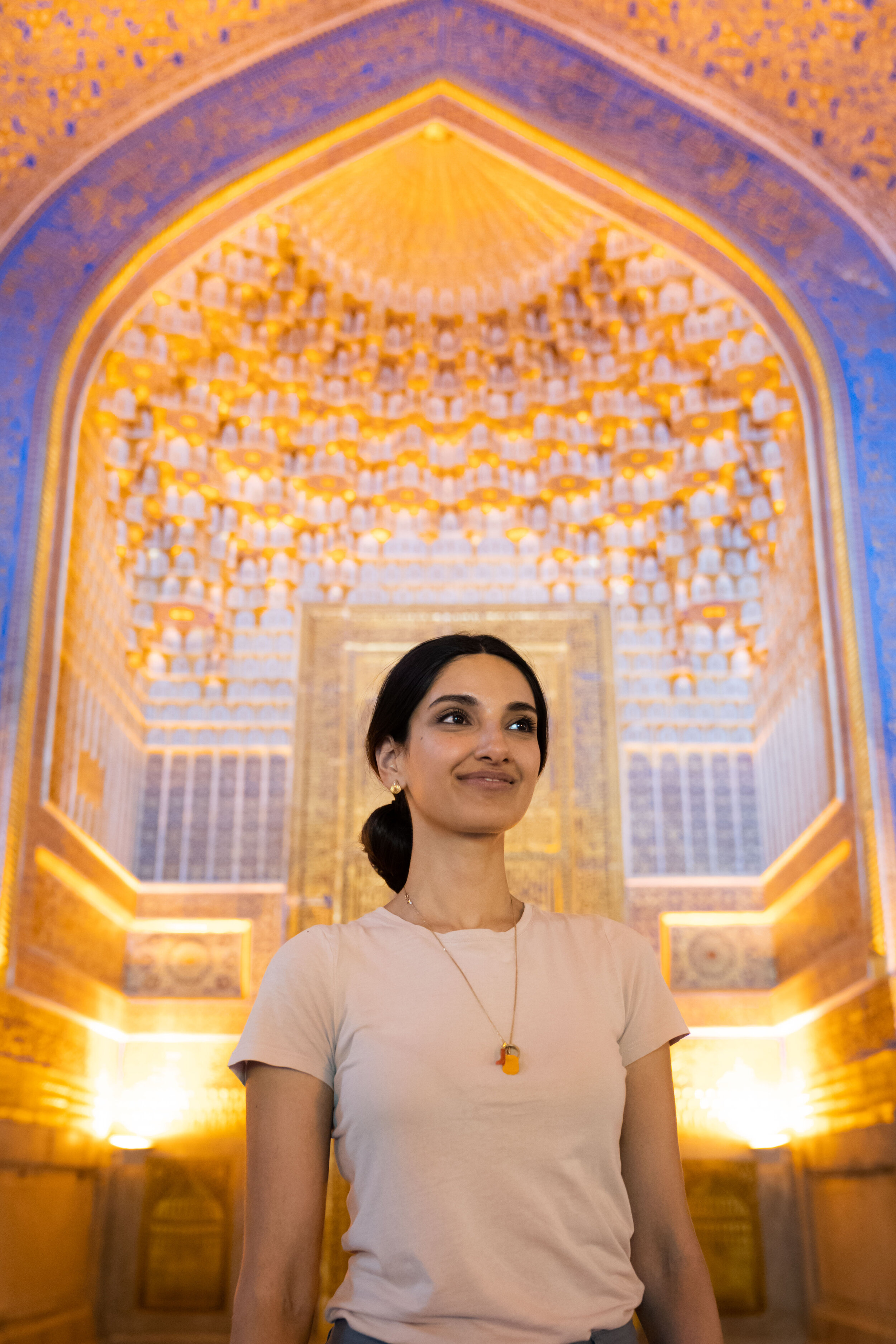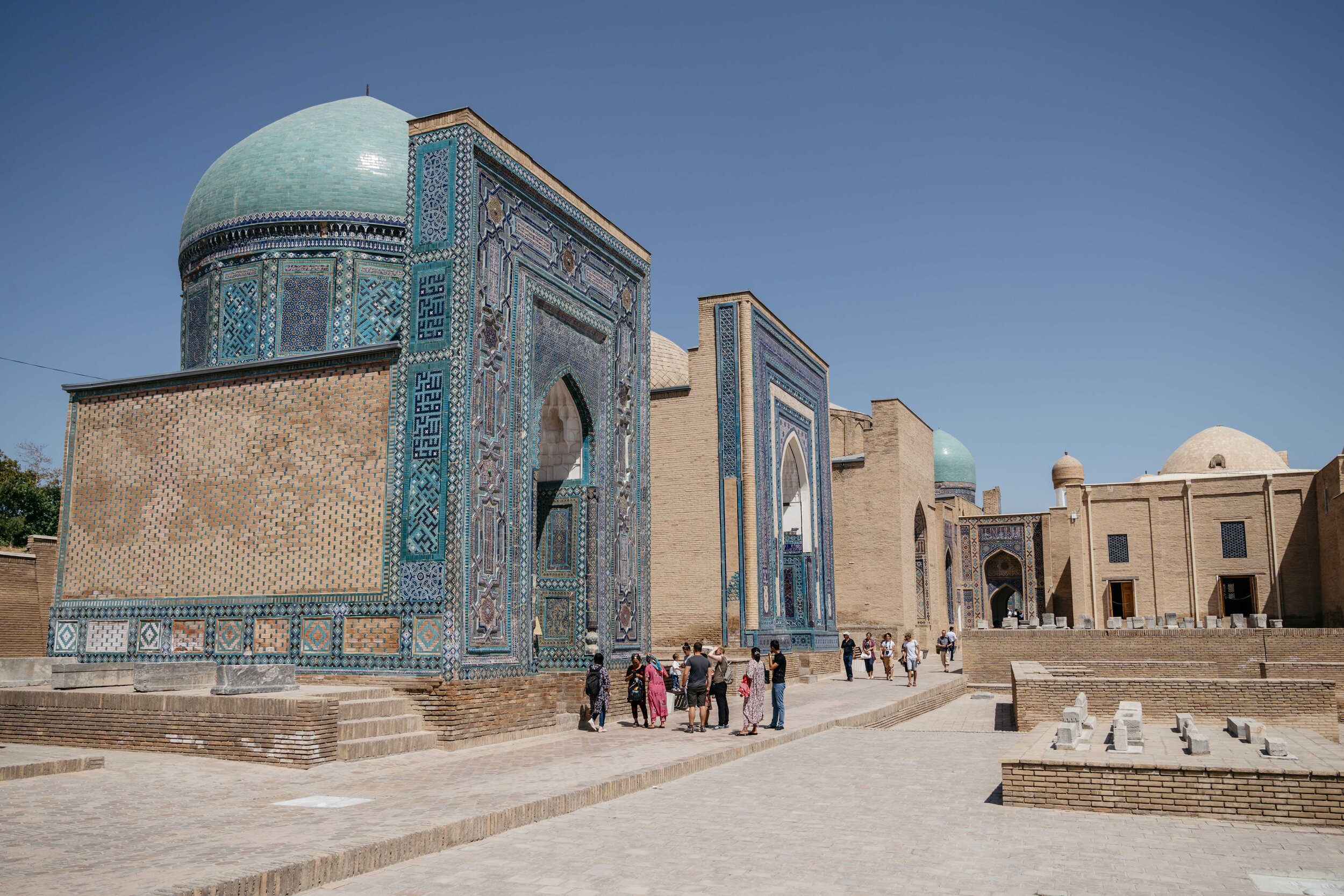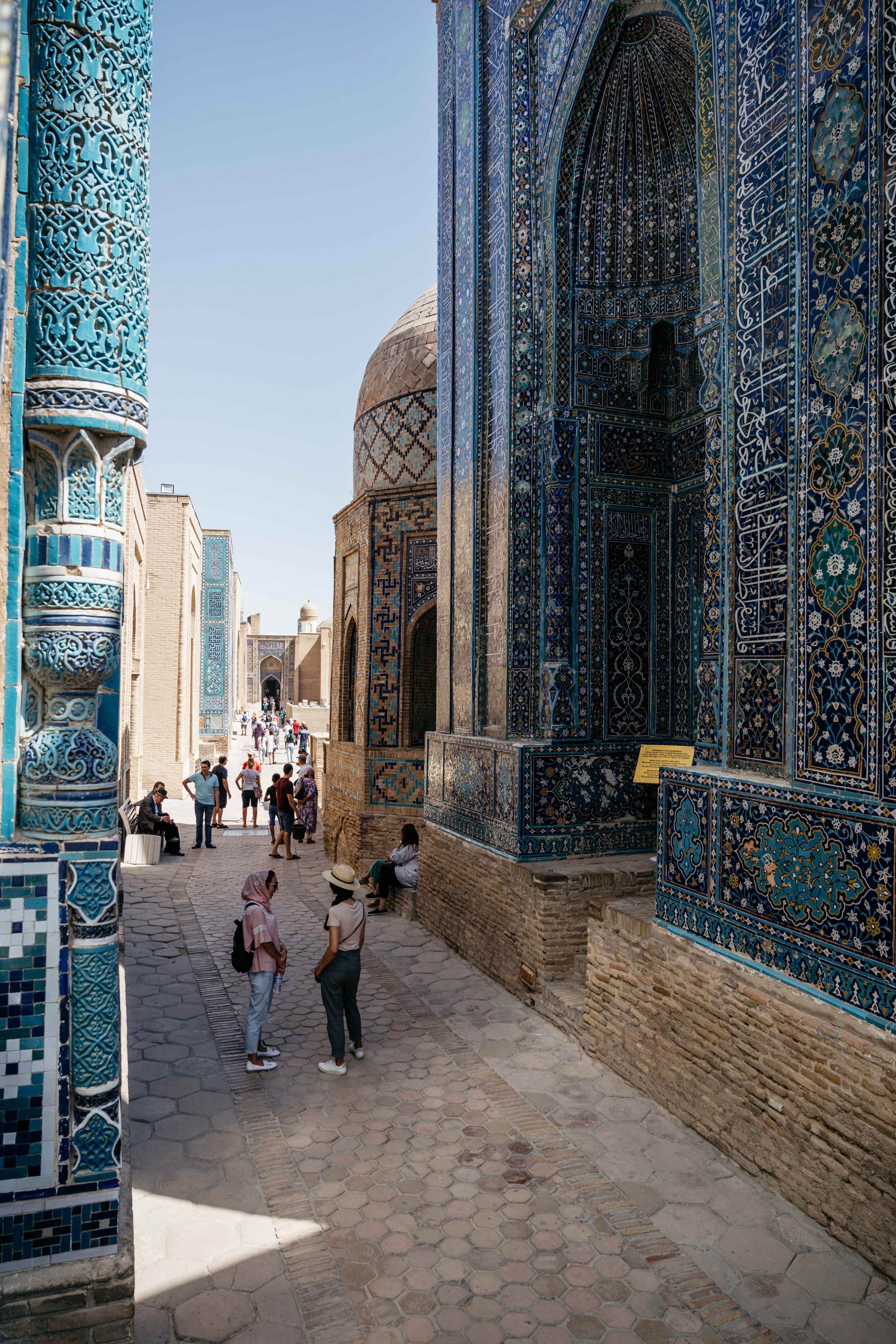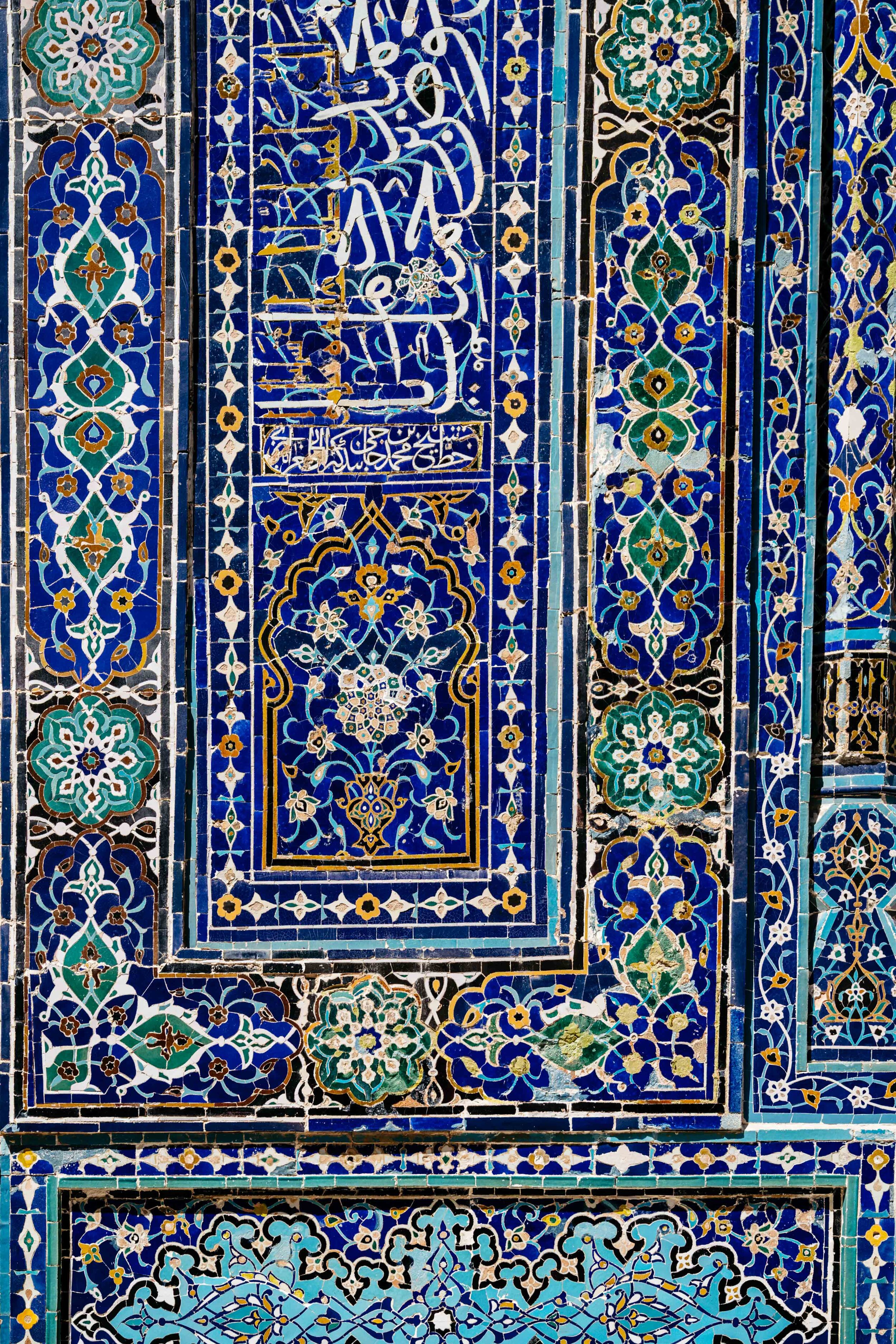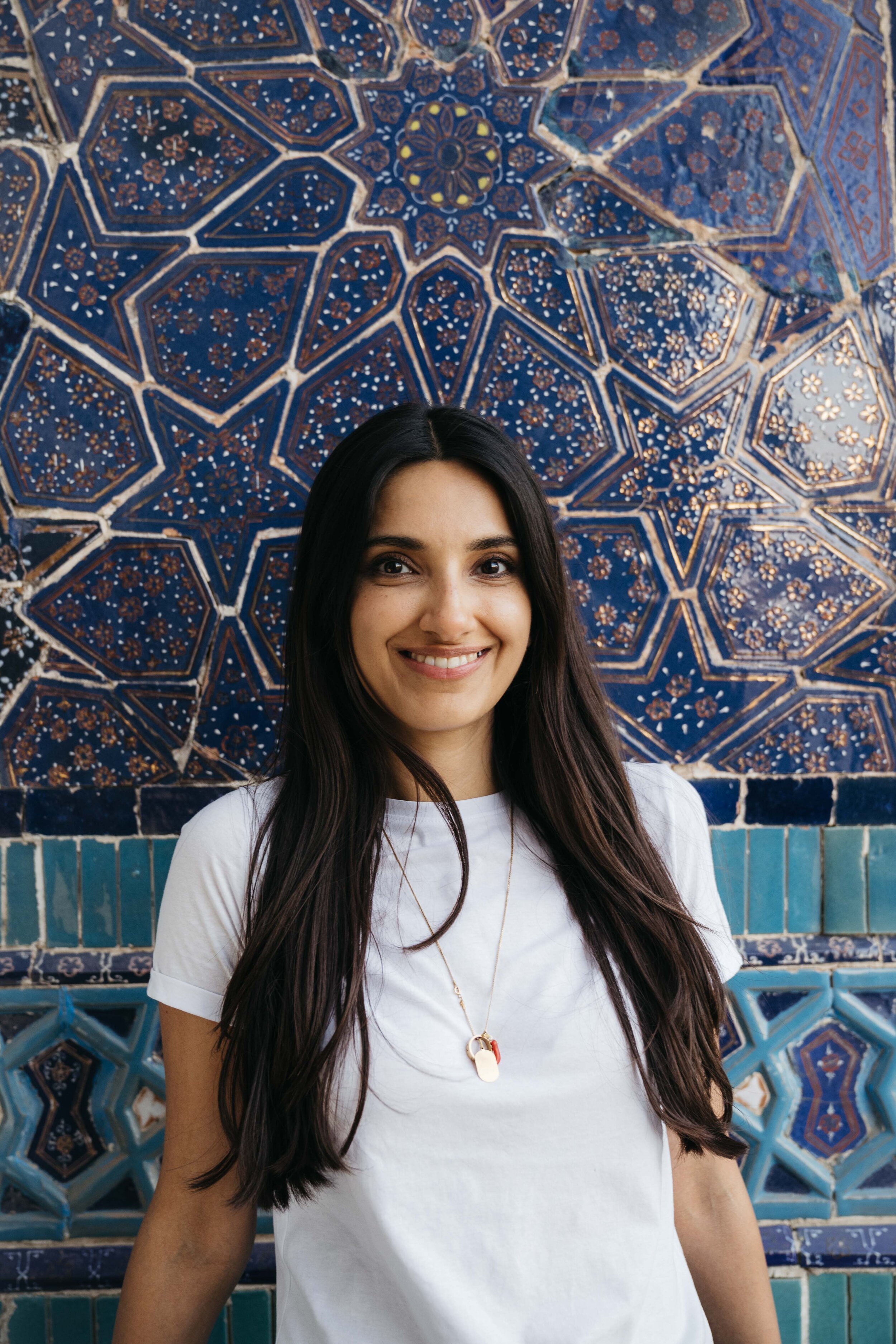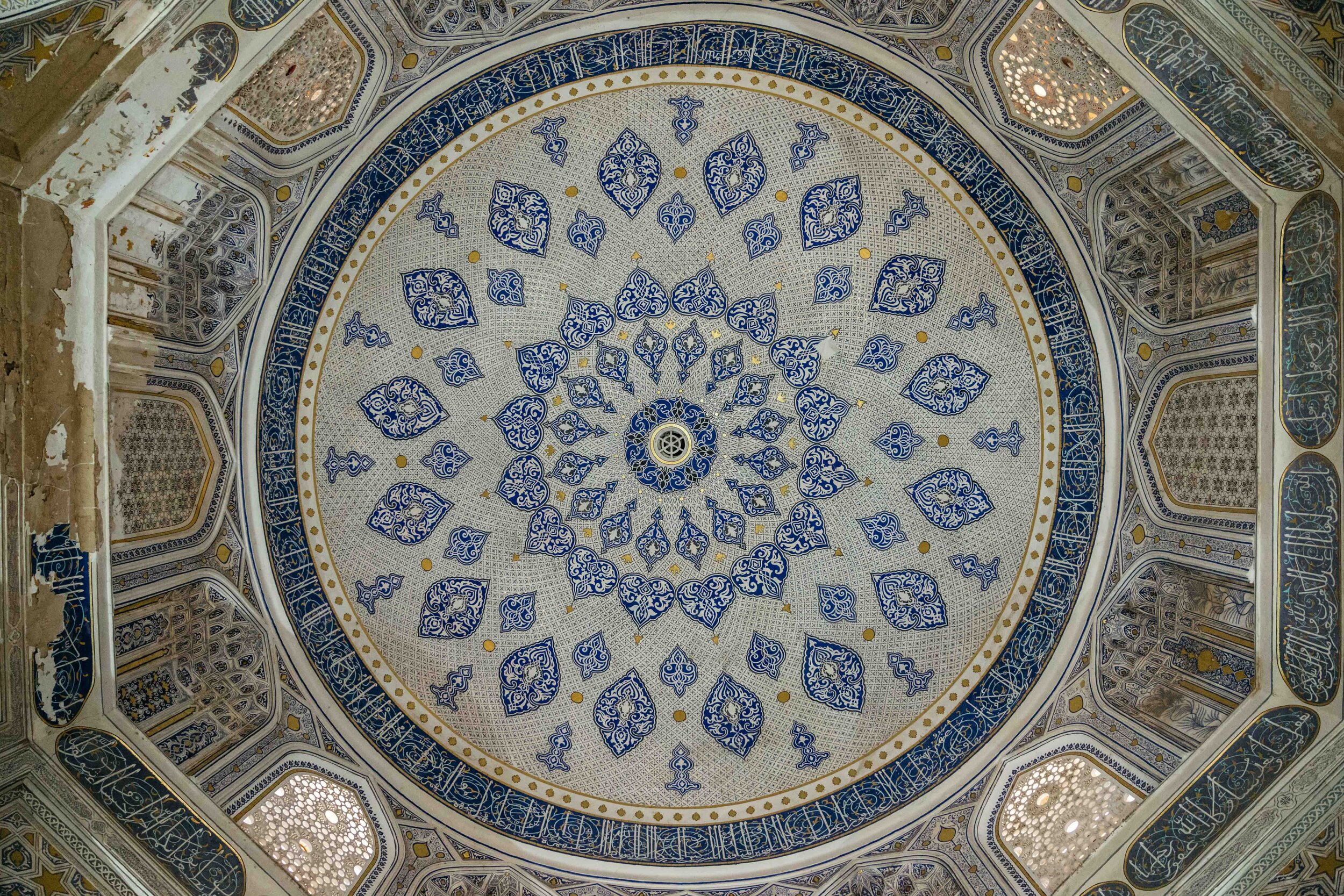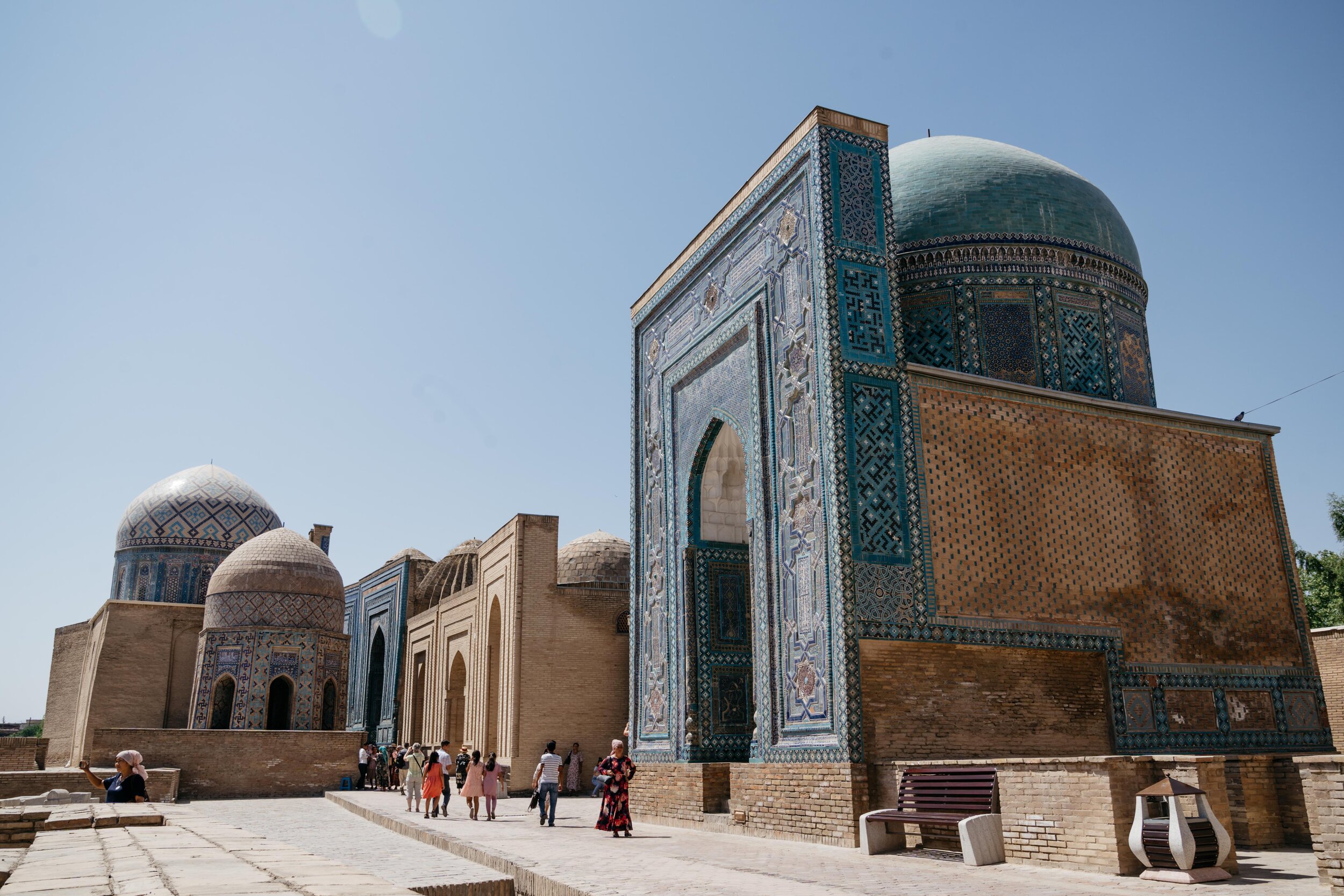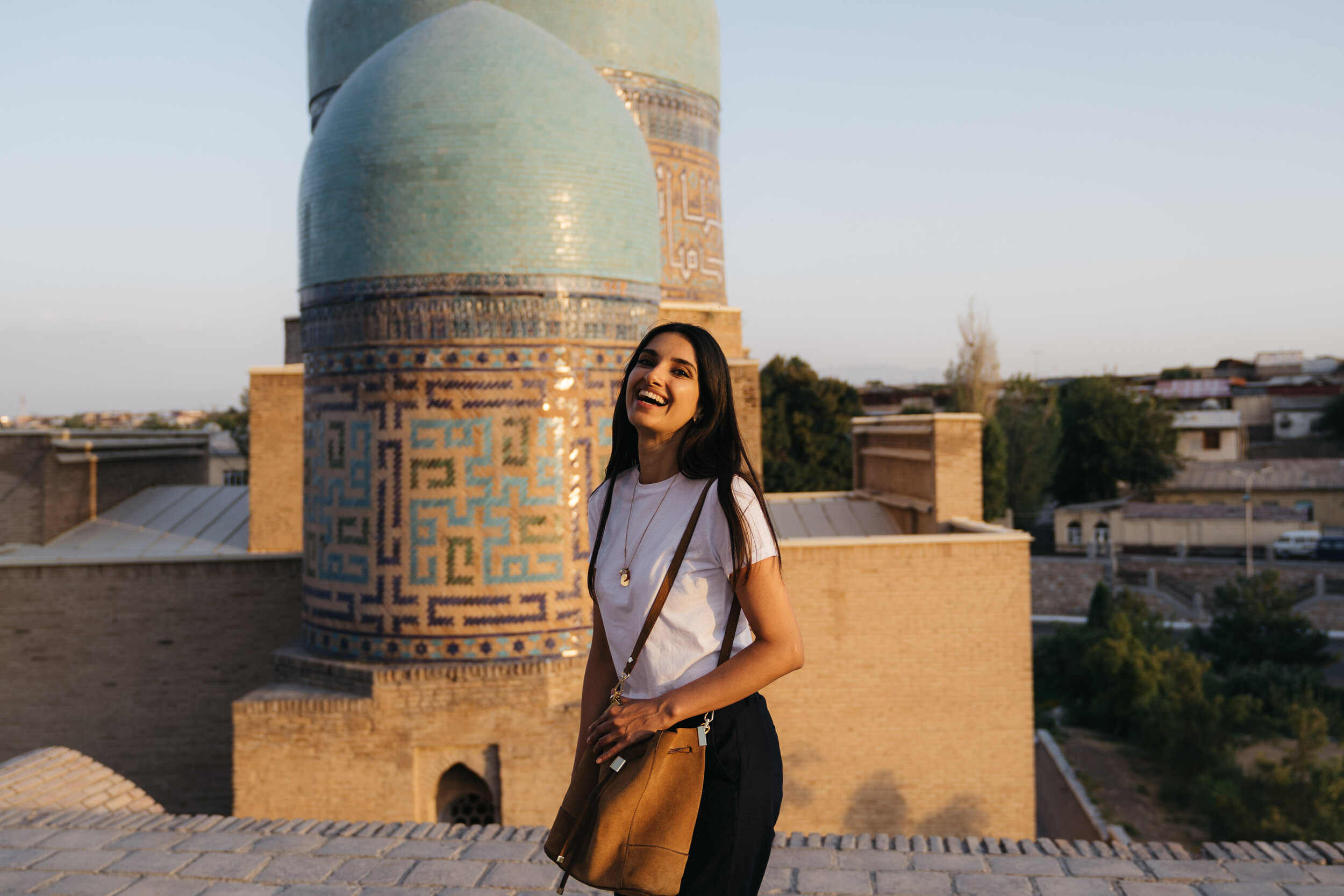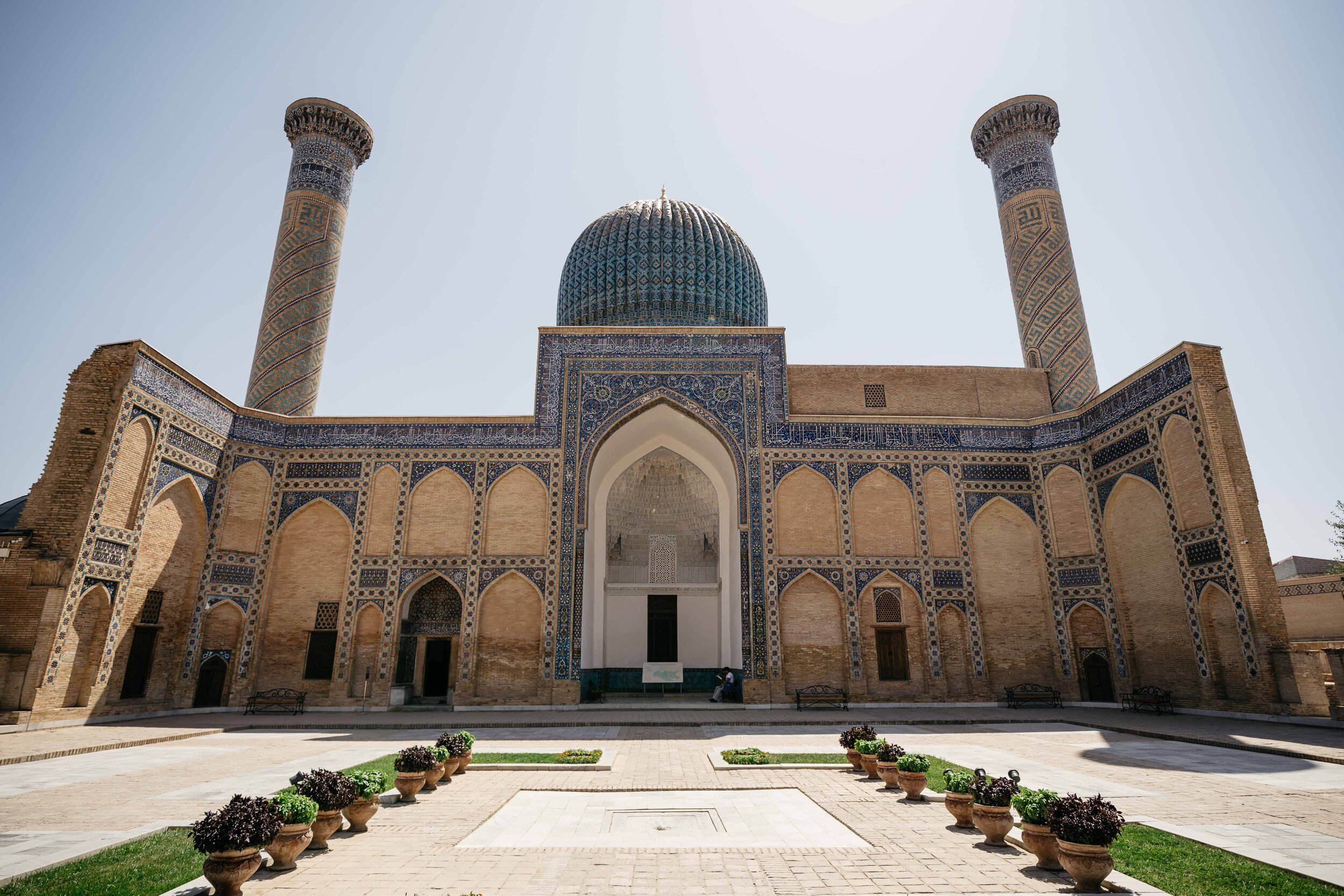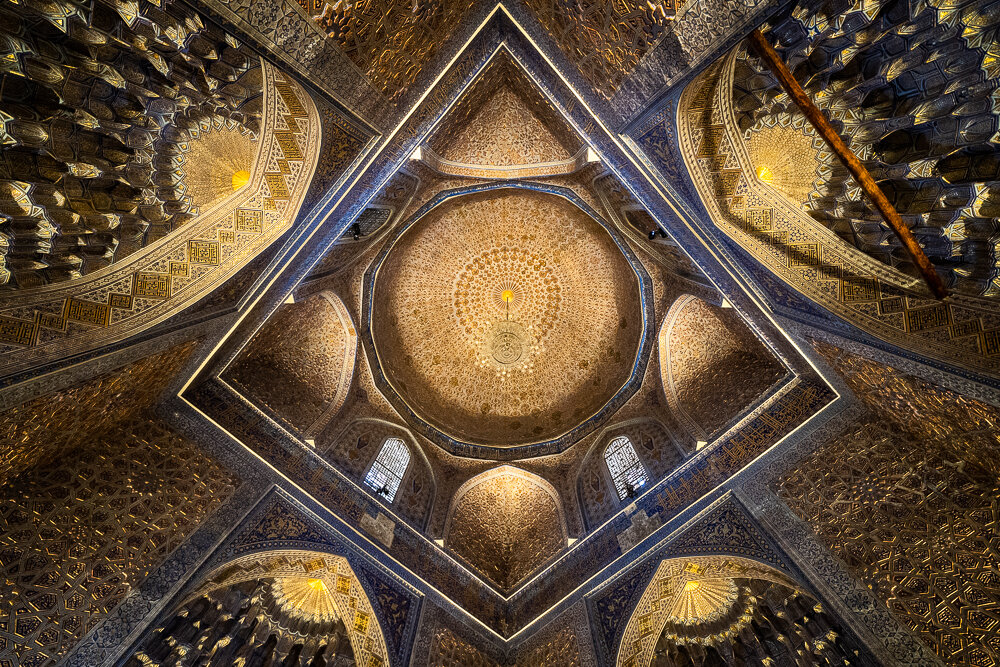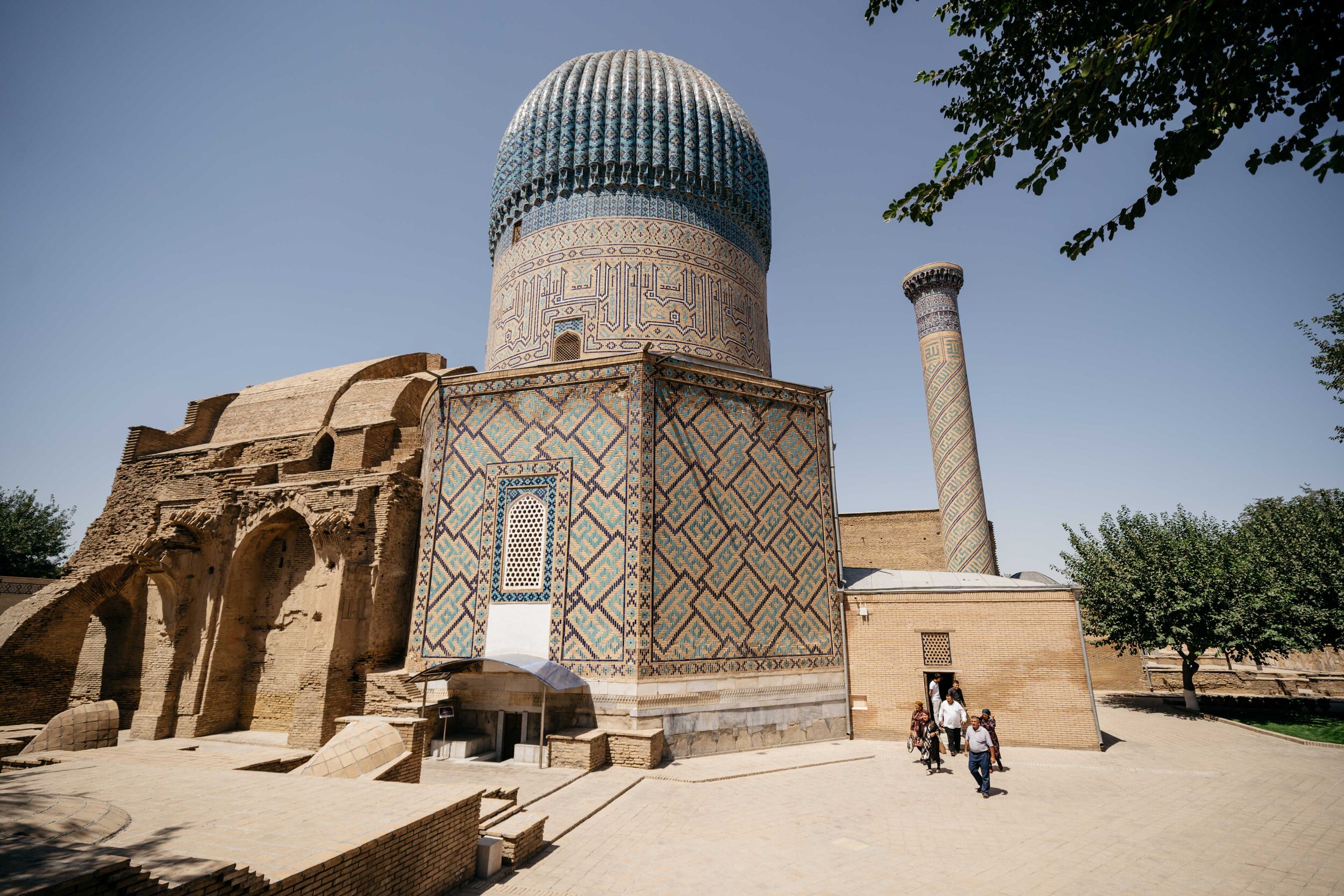A walk around Samarkand
‘Samarkand is a city in southeastern Uzbekistan and among the oldest continuously inhabited cities in Central Asia. Prospering from its location on the Silk Road between China and the Mediterranean Sea, Samarkand was once one of the largest cities of Central Asia.
By the time of the Achaemenid Empire of Persia, it was the capital of the Sogdian satrapy. The city was conquered by Alexander the Great in 329 BCE, when it was known as Markanda. The city was ruled by a succession of Iranian and Turkic rulers until it was conquered by the Mongols under Genghis Khan in 1220.
The city is noted as a centre of Islamic scholarly study and the birthplace of the Timurid Renaissance. In the 14th century, Timur (Tamerlane) made it the capital of his empire and the site of his mausoleum, the Gur-e Amir. The Bibi-Khanym Mosque, rebuilt during the Soviet era, remains one of the city's most notable landmarks. Samarkand's Registan square was the city's ancient centre and is bounded by three monumental religious buildings. The city has carefully preserved the traditions of ancient crafts: embroidery, goldwork, silk weaving, copper engraving, ceramics, wood carving, and wood painting. In 2001, UNESCO added the city to its World Heritage List as Samarkand – Crossroads of Cultures’ (Wikipedia).
Most of the photos here are of monuments constructed during the Timurid period (1370 - 1507) when this empire stretched from Asia Minor to the Himalayas. To decorate Samarkand and other Timurid cities, ‘carpenters, painters, weavers, tailors, gem cutters, in short craftsmen of any kind according to one contemporary, were deported from Damascus, when it was ransacked’ (Frankopan, P., The Silk Roads). It is recorded that in Timur’s court, there could be found ‘golden trees with trunks as thick as might be a man’s leg. Among the golden leaves were ‘fruits’ which on closer inspection turned out to be rubies, emeralds, turquoise stones and sapphires, along with large, perfectly round pearls’ (Frankopan, P. The Silk Roads).
I hope you enjoy the photos.
Bibi-Khanym Mosque
Built 1399-1405, with later interventions. In the centuries following its construction, the mosque fell into considerable disrepair due to poor construction methods, and earthquakes. Much of the original structure was replaced by first the Soviets and then Uzbek conservationists who ‘successfully stabilised and restored the collapsing main dome, rebuilt the entrance arch broken in the 1897 earthquake, reconstructed the vanished domes on the side iwans, and everywhere replaced crumbling brick with new masonry indistinguishable from the old’ (Asian Historical Architecture).
Registan Square
‘The Registan was the heart of the ancient city of Samarkand of the Timurid Empire, now in Uzbekistan. The name Rēgistan means "sandy place" or "desert" in Persian.
The Registan was a public square, where people gathered to hear royal proclamations, heralded by blasts on enormous copper pipes called dzharchis - and a place of public executions. It is framed by three madrasahs (Islamic schools) of distinctive Islamic architecture. The square was regarded as the hub of the Timurid Renaissance’ (Wikipedia).
Shah-i-Zinda Tomb Complex
‘Shah-i-Zinda is a necropolis in the north-eastern part of Samarkand. The site includes mausoleums and other ritual buildings of 11-15th and 19th centuries. The name Shah-i-Zinda (meaning "The living king") is connected with the legend that Qutham ibn Abbas, a cousin of the Prophet Muhammad, is buried here. He came to Samarkand with the Arab invasion in the 7th century to preach Islam. Popular legends speak that he was beheaded for his faith, but he didn't die, took his head and went into the deep well (Garden of Paradise), where he's still living now’ (Wikipedia).
Guri Amir Mausoleum
‘The Gūr-i Amīr or Guri Amir is a mausoleum of the Turco-Mongol conqueror Timur (also known as Tamerlane). It occupies an important place in the history of Central Asian architecture as the precursor and model for later Mughal tombs, including the Gardens of Babur in Kabul, Humayun's Tomb in Delhi and the Taj Mahal in Agra, built by Timur's descendants. The mausoleum has been heavily restored.
Gur-e Amir is Persian for "Tomb of the King". This architectural complex with its azure dome contains the tombs of Tamerlane, his sons Shah Rukh and Miran Shah and grandsons Ulugh Beg and Muhammad Sultan. Also honoured with a place in the tomb is Timur's teacher Sayyid Baraka.
The earliest part of the complex was built at the end of the 14th century by the orders of Muhammad Sultan. Now only the foundations of the madrasah and khanaka, the entrance portal and a part of one of four minarets remains.
The construction of the mausoleum itself began in 1403 after the sudden death of Muhammad Sultan, Tamerlane's heir apparent and his beloved grandson, for whom it was intended. Timur had built himself a smaller tomb in Shahrisabz near his Ak-Saray palace. However, when Timur died in 1405 on campaign on his military expedition to China, the passes to Shahrisabz were snowed in, so he was buried here instead. Ulugh Beg, another grandson of Tamerlane, completed the work. During his reign the mausoleum became the family crypt of the Timurid Dynasty’ (Wikipedia).
